The British Army ended the Fifties with enormously successful vehicles; Centurion, Saladin, Saracen, Ferret, Land Rover, the Bedford RL and AEC Militant.
Not only had these been proven in operations on the Korean peninsular and in Malaya, among many others, and they were all export successes.
The Post War desire to standardise on a common set of vehicle building blocks such as the Rolls-Royce B Series engine was ambitious. Although it was not a 100% successful strategy, it still went a long way to reducing the logistics and support burdens compared to the menagerie of vehicles and components the British Army had to deal with by necessity during WWII.
Despite the rapid drawdown of forces post-war, and various mergers in the design and industrialisation landscape, the approach of in-house design and outsourced manufacture worked well.
The Looming Threat East
With Korea, Malaya, and many other withdrawals from empire campaigns behind it, the British Army of the Rhine was well established to fight Warsaw Pact forces should it need to.
National Service ended in 1960.
In 1964, the Admiralty, the War Office, the Air Ministry, and the Ministry of Aviation, were merged to form the Ministry of Defence.
France withdrew her forces from NATO integrated command in 1966.
Time changed, as they always did.
But one thing that remained constant was the threat from Warsaw Pact forces and the realisation that 1) they were not standing still in technology terms, and 2) the threat of nuclear and chemical battlefield weapons was a credible one.
These two factors informed the British Army’s vehicle designs, especially the latter.
Transport Vehicles
Bedford MK
The Bedford RL was an undoubted success but by the early sixties, it needed replacement.
Austin, Bedford and Commer all built several test vehicles, with Bedford winning with their MK design, like their RL, based on a civilian design (The Bedford TK).
Like the Bedford RL, the Bedford MK 4 tonner (FV 13801/FV 13802) would go on to become another great success, with over 50,000 being produced.
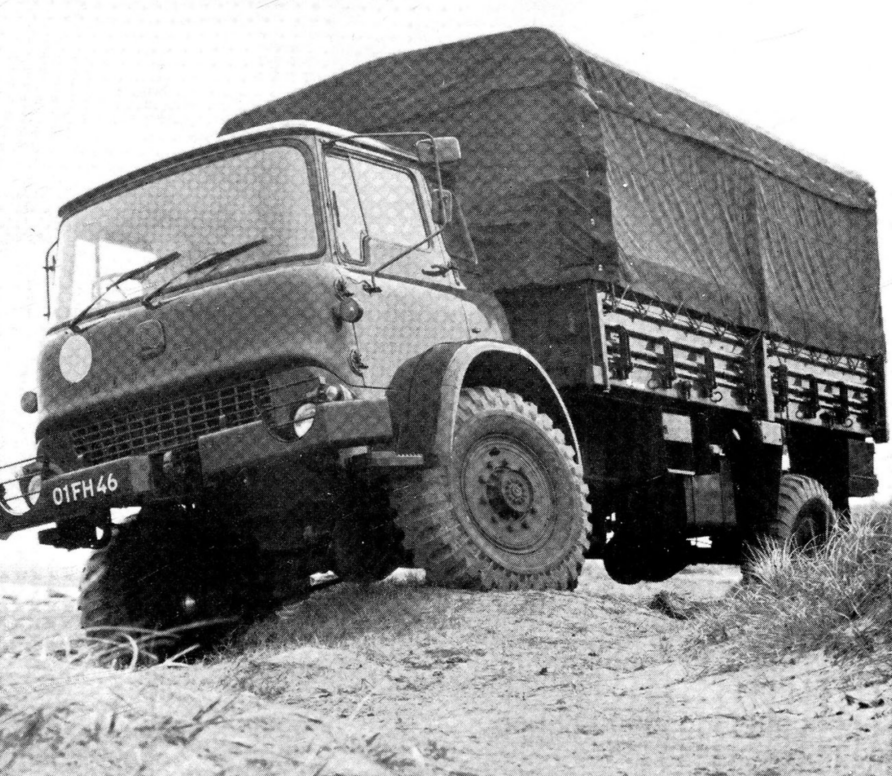
Production of the Bedford RL ceased in 1969.

Antar Mk3
Although the Thorneycroft Antar tractor unit and tank transporter had been in service since the early fifties, the projected weight of the Chieftain meant a new version was needed.
In the Mk3 Antar, the Rolls Meteorite engine was replaced with a Rolls-Royce C8SFL supercharged diesel.
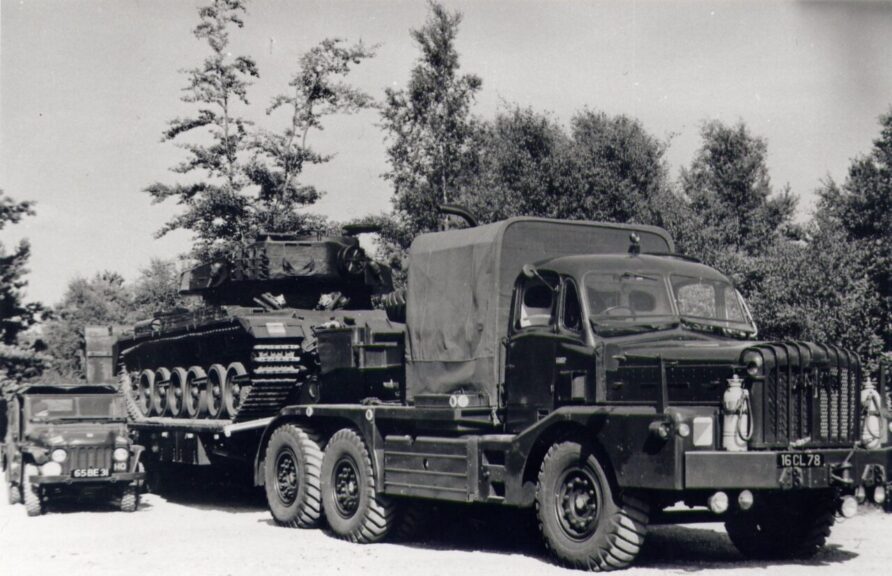
Antar Mk3s served until the early eighties.
Land Rover
The 1958 Series II Land Rover had a relatively short production run and by 1961, the Series IIA was in production.
The Mk6 (short wheelbase) was ordered by the War Office in 1960, followed by the Mk7 (long wheelbase)
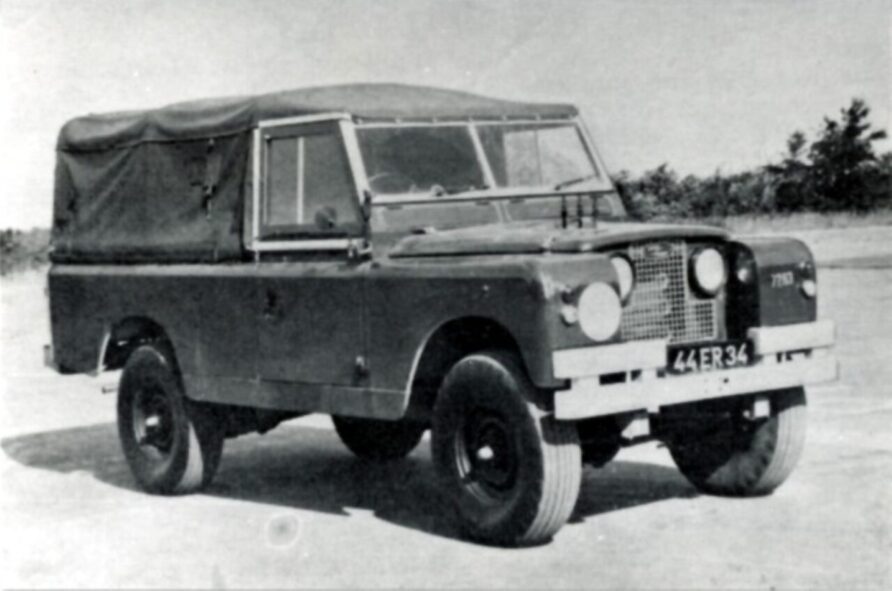
The late sixties also saw the introduction of the half-tonne lightweight Land Rover for airmobile forces.
FV620 Stalwart
Although there was some limited development of Saladin and Saracen in the mid-sixties (Perkins diesel engine, 90 mm turret etc.) the drivetrain was used as the basis for the unique Stalwart amphibious transport vehicle.
In the early fifties, the British Army was considering operations to support an increasingly armoured force in Germany. It was thought that in any future European conflict, the Warsaw Pact would destroy all river bridges as a matter of course, and given the many rivers in the area there was a choice to be made; either to dramatically improve Royal Engineer bridging capacities or, to consider amphibious supply vehicles.
A version of the FV432 was evaluated, but wheels had many advantages for the supply role. So, in 1957, Alvis put forward the idea of an amphibious load carrier based on the Salamander hull, and put their money where their mouth was by developing the Prototype High Mobility Load Vehicle in 1959.
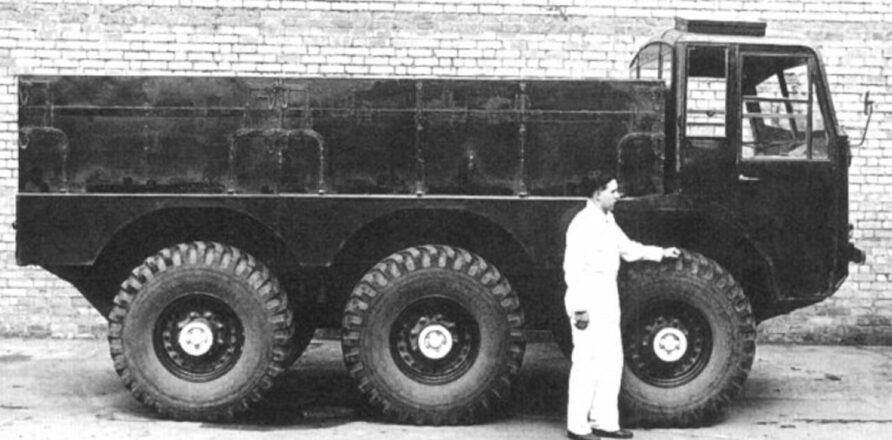
From this first prototype, and perhaps a bit of the ‘Old boy’s network’ in defining a demand, an official requirement was issued in 1960. This included a 5-ton payload, superior off-road performance to Saracen/Saladin, and the ability to cross rivers and other watercourses unaided.
A second prototype was developed that incorporated a great many changes to meet the ‘official’ requirement.
Several additional prototypes continued the development effort, including evaluations by both the British Army and Swedish Navy (for shore battery resupply).
This incremental improvement in the incorporation of user feedback resulted in 1962, when the British Army ordered 125, to be designated the FV620, and named Stalwart.
Again, additional fine-tuning took place as the vehicles entered service and in 1964, another 325 were ordered.
The Mk2 version (FV622) had improved visibility, driver layout, self-recovery winch and modifications to improve air carriage.
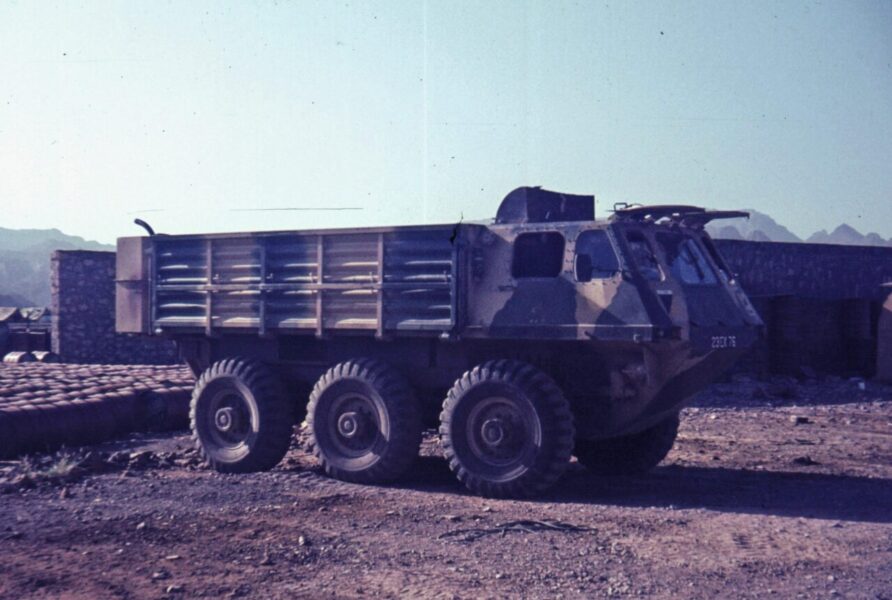
Additional variants of the Mk2 included REME (FV624) vehicles, gun limber (FV623), Unit Bulk Refuelling Equipment (UBRE) and even a proposal for a Swingfire launcher.
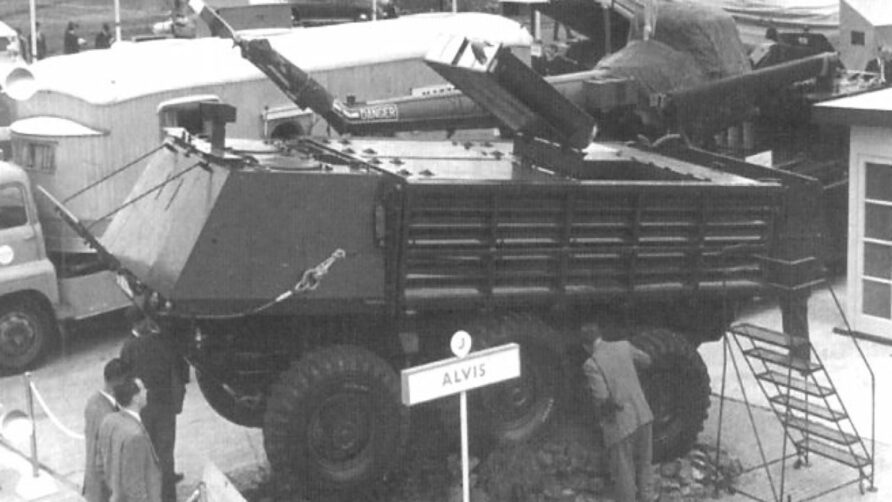
Just under 800 Stalwarts of various types were received by the British Army.
And no story about Stalwart is complete without the oft-told tale of one attempting a Channel dash.
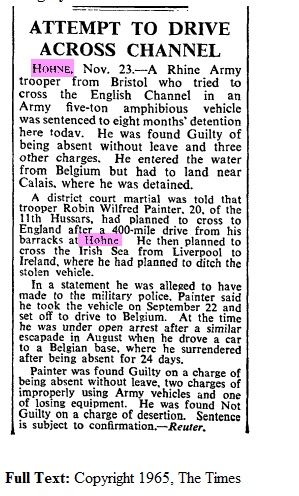
The urban legend is the soldier who finished his career in the Army after serving his sentence and then joined Alvis, no idea if any of that is true, though!

Wheeled Armoured Vehicles
Although FV432 was in service in Germany from the early sixties, Saracen and Saladin continued to be used in Aden, Libya, Borneo, and other overseas locations. Proving its blend of firepower and mobility was relevant then, as it was when conceived in the late forties.
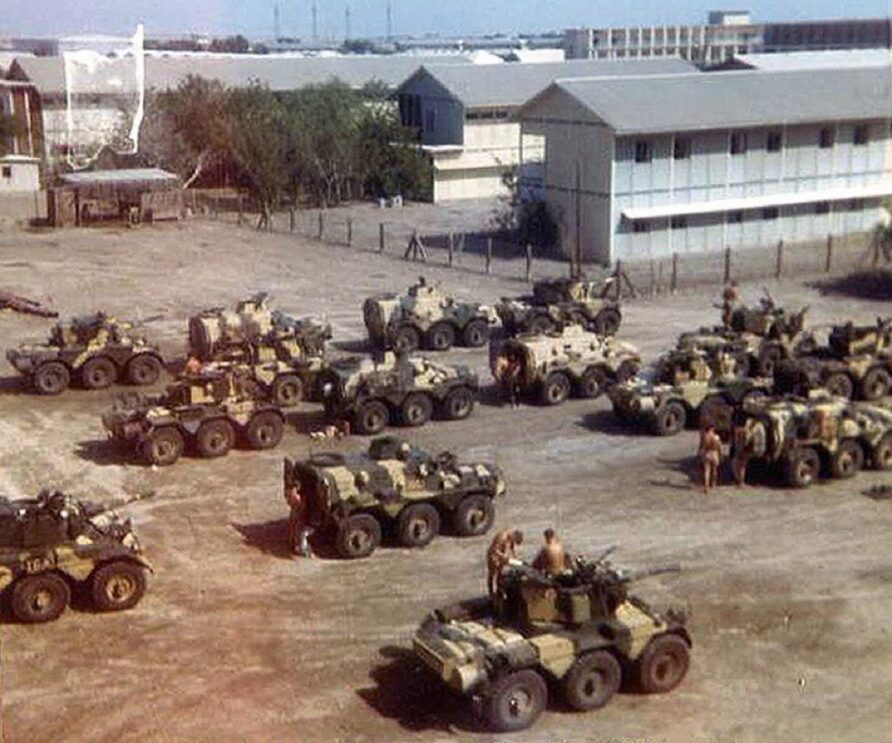
Mines were a particular problem in Aden during the sixties, and several vehicle modifications were introduced to deal with them.
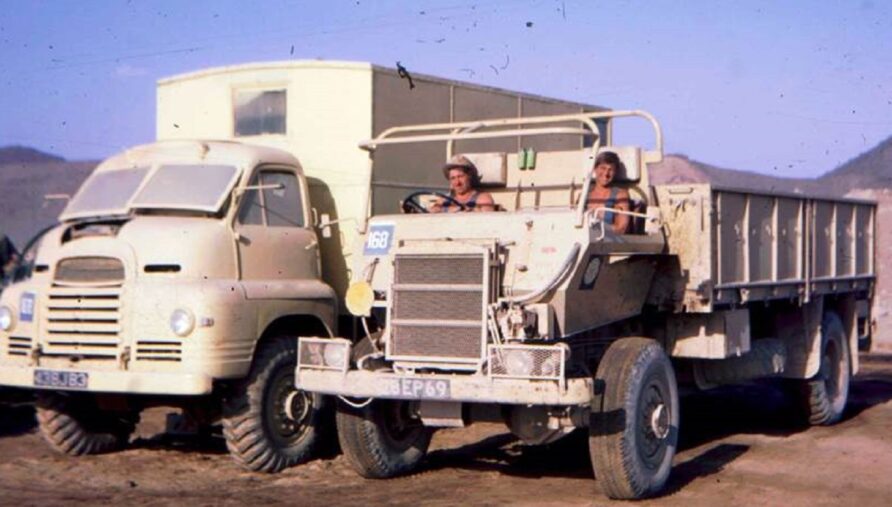
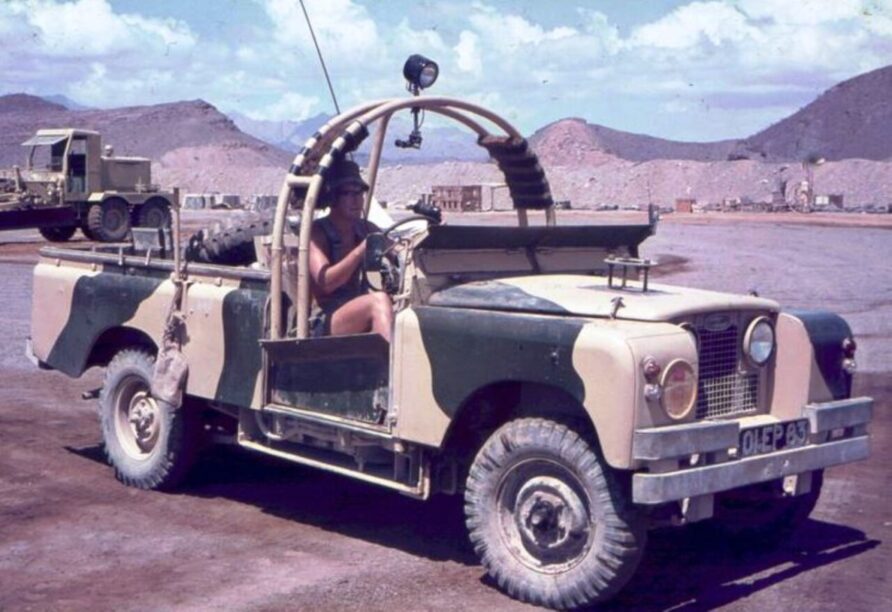
Meanwhile, the wheeled variant of the CVR programme was in development to GSR 3358, issued in 1965.
FV721 CVR(W) Fox
The British Army had long made use of wheeled armoured cars in the reconnaissance role, the FV700 Ferret and FV600 Saladin being two good examples, described in Part 2 of this series of posts.
FVRDE proposed two variants of the Ferret Mark V to meet GSR 3358 (and GSR 3340 for a liaison vehicle)
A one-man turret 7.62 mm armed version, called FV 722 Vixen, used the same turret as intended for FV432.
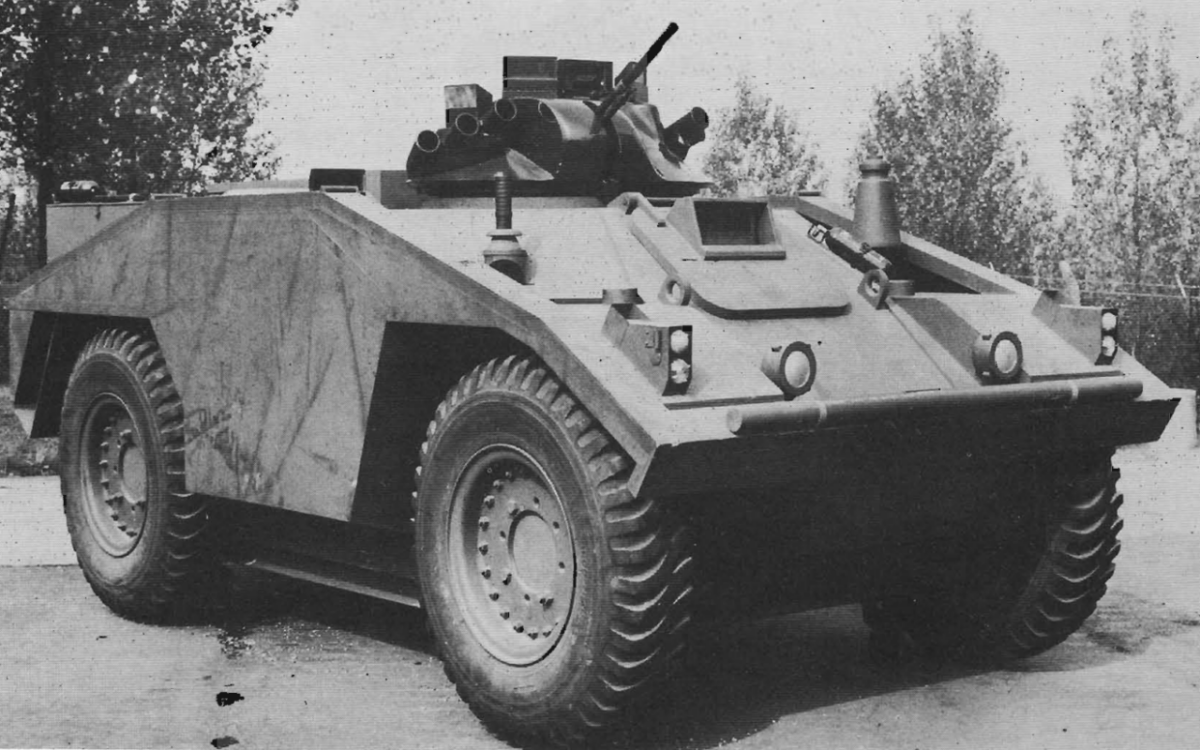
And a 30 mm RARDEN armed version, the same weapon as proposed for CVR(T) (and ultimately, Warrior)
Fox was developed further by Daimler under a separate development contract and by 1967, the first prototype was delivered
By 1969, all 15 prototype vehicles had been delivered, ready for user acceptance trials.
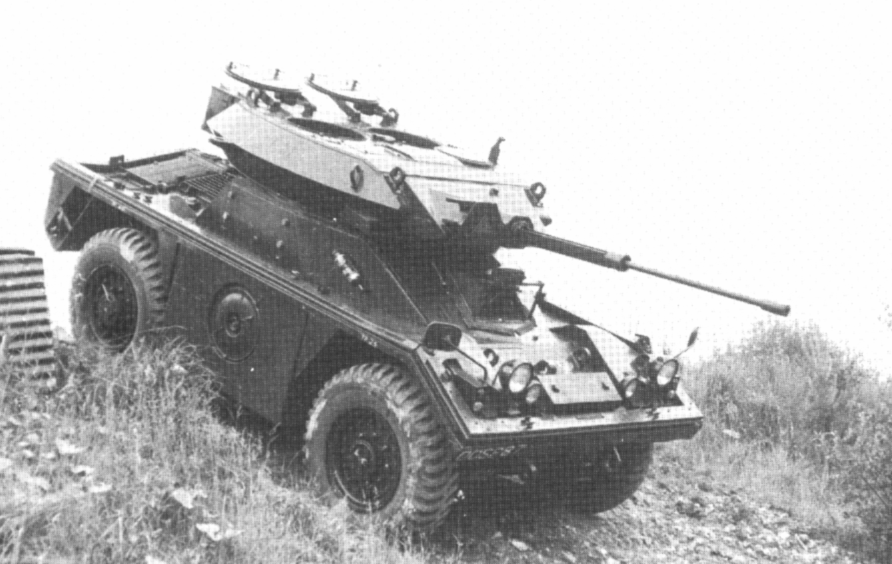
Although it is a poor-quality image below, it shows air despatch trials for CVR(W) Fox, like Ferret, air mobility was very much an important consideration.
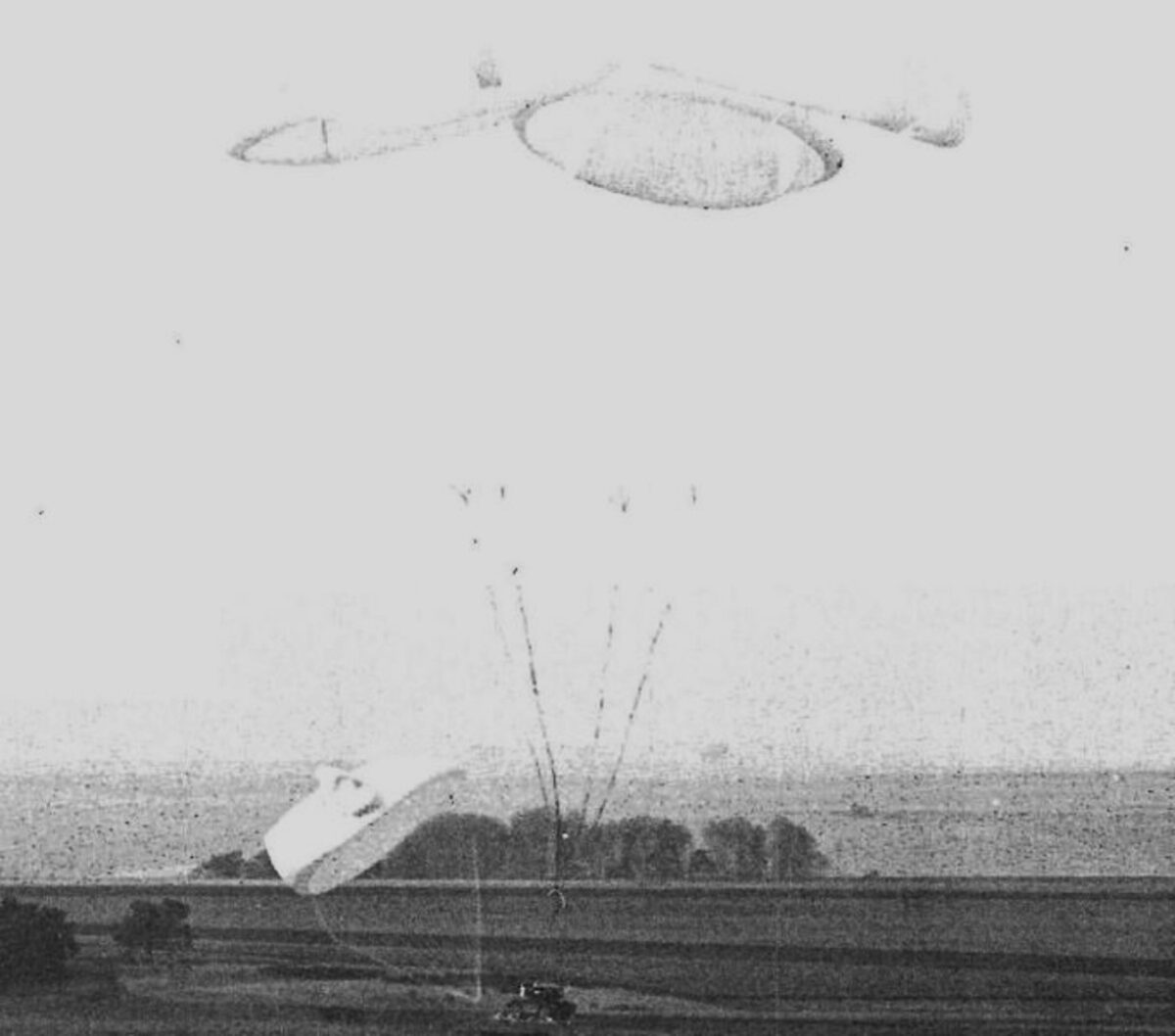
A total of 328 Fox vehicles were produced by ROF Leeds, with all being withdrawn by 1994, Daimler closed their armoured vehicle production capacity.
Tracked Armoured Vehicles
Centurion Beach Armoured Recovery Vehicle
Design and development of the Centurion-based Beach Armoured Recovery Vehicles started in the late fifties, 12 were introduced in 1963
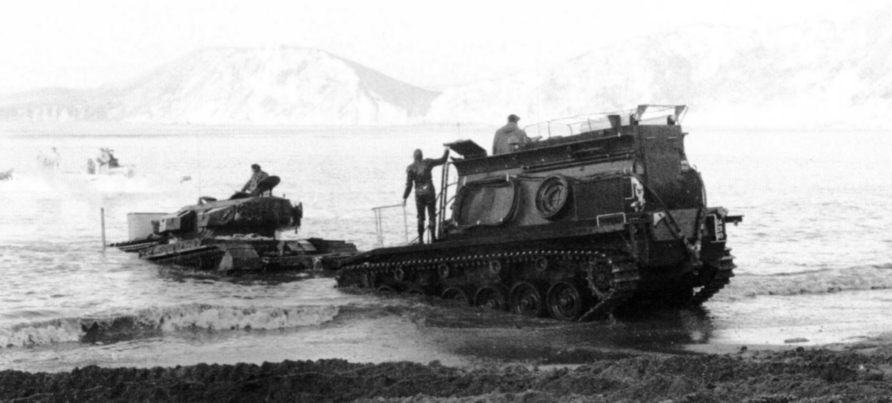
FV4201 Chieftain
As described in the previous post, the development of the Chieftain began in the early fifties, including work on the 40-tonne Centurion.
The first prototype of Chieftain was completed in late 1959, continuing through the early sixties.
The recumbent driver position of the 40-Tonne Centurion was also adopted for Chieftain.
1966 was the fiftieth anniversary of the tank’s first battle, it was the year of Chieftain, the first Main Battle Tank.
A year later, the Mark Il production tanks began to be delivered to units, it was called the Main Battle Tank, the first of its kind, replacing Centurion and Conqueror.
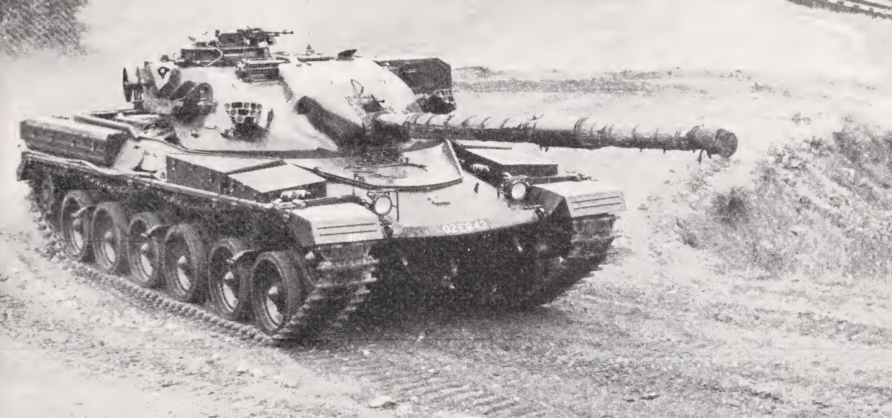
Whilst Chieftain was a well-protected and powerful tank, it was hobbled by the decision to adopt a multi-fuel engine, the Leyland L60. Although NATO set out a requirement for multi-fuel engines, the rest of NATO gave this a stiff ignoring and developed diesel, the UK persisted with multi-fuel.
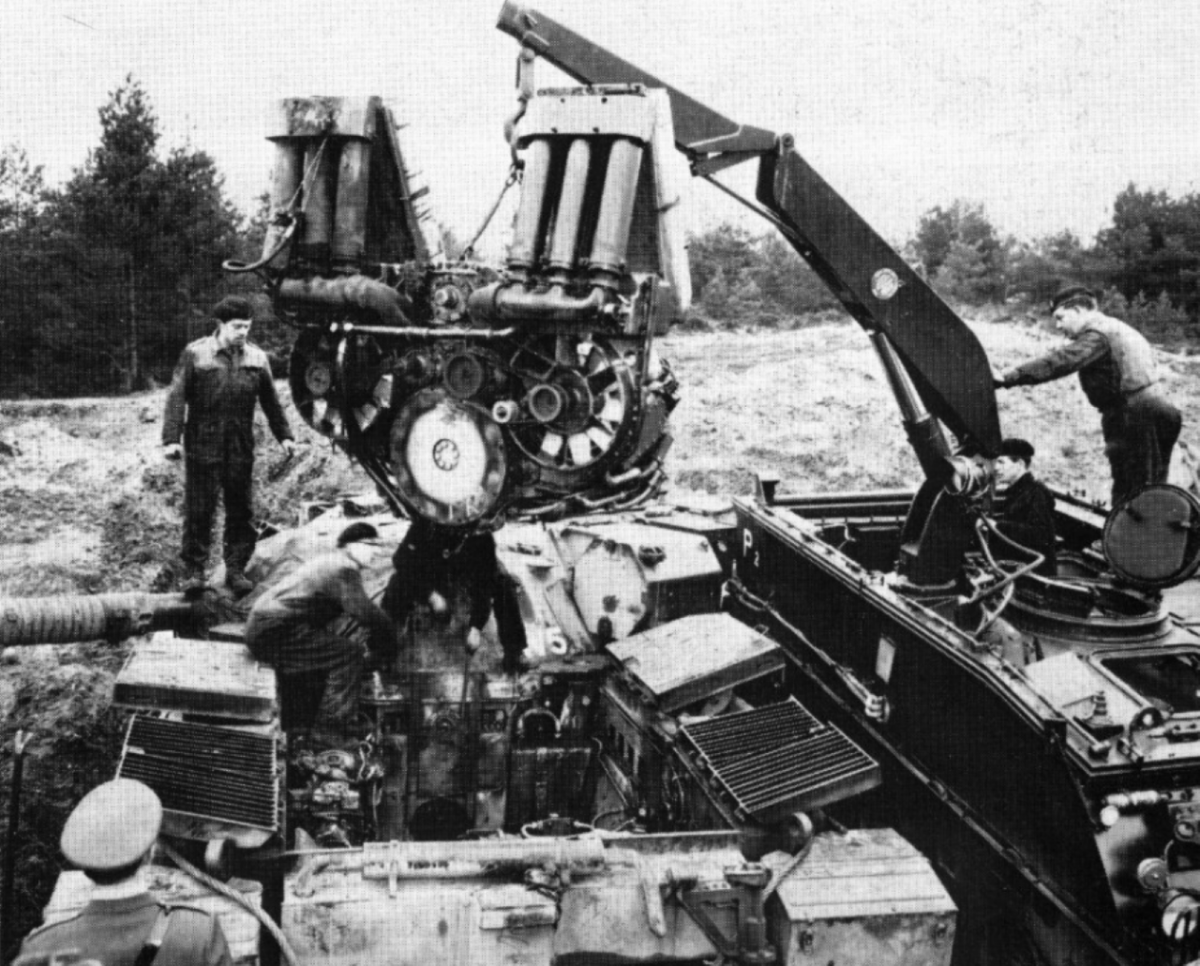
The L60 was extremely unreliable, suffering from fluid leaks and excess vibration throughout its career, and it is probably fair to say that the L60 ruined the reputation of Chieftain, which was, in other aspects, brilliant and world-leading.
The work done on the development projects in the late fifties, including a liquid propellant main gun, led to the suggestion that bagged charges might be used because stowage would be much simplified. The fire risk could be reduced through water-jacketed stowage bins.
If hot fragments entered the hull, they would penetrate the water jacket, thus dousing the bagged charge and preventing or delaying exposition, allowing the crew to exit safely.
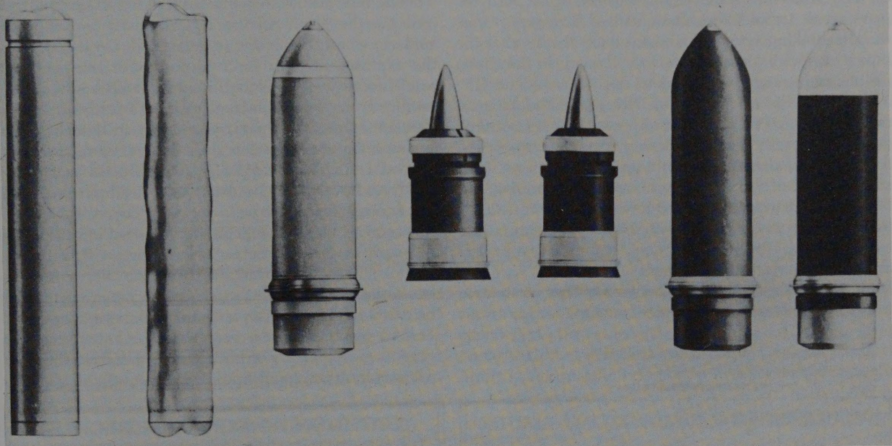
Chieftain used a powerful L11A5 120 mm rifled main gun that used these bagged charges and separate projectiles.
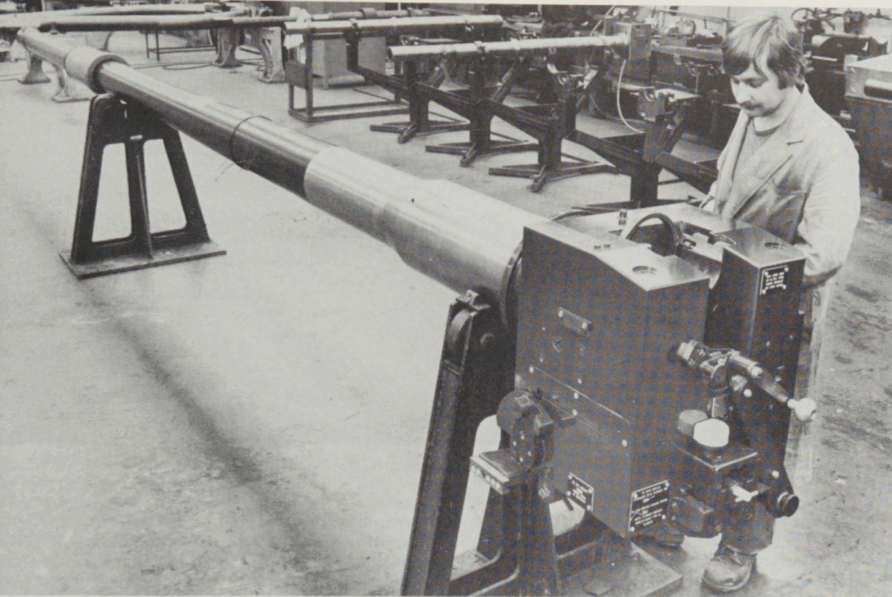
Conquerors were withdrawn in the mid-sixties when sufficient Chieftains became available, with Mk3 Chieftains produced from 1969.
Before reading on, would you mind if I brought this to your attention?
Think Defence is a hobby, a serious hobby, but a hobby nonetheless.
I want to avoid charging for content, but hosting fees, software subscriptions and other services add up, so to help me keep the show on the road, I ask that you support the site in any way you can. It is hugely appreciated.
Advertising
You might see Google adverts depending on where you are on the site, please click one if it interests you. I know they can be annoying, but they are the one thing that returns the most.
Make a Donation
Donations can be made at a third-party site called Ko_fi.

Think Defence Merch
Everything from a Brimstone sticker to a Bailey Bridge duvet cover, pop over to the Think Defence Merchandise Store at Red Bubble.
Some might be marked as ‘mature content’ because it is a firearm!
Affiliate Links
Amazon and the occasional product link might appear in the content, you know the drill, I get a small cut if you go on to make a purchase
FV430 Series
The Armoured Personnel Carrier (APC) was developed to allow infantry soldiers to survive in an NBC environment and against artillery fragments.
The vehicle would provide sufficient mobility to get the infantry to a point of disembarkation, and no more.
The FV430 series was built on lessons from the FV421 and used most of the major components.
The first of the series was the FV431 load carrier, an image of the prototype is below.
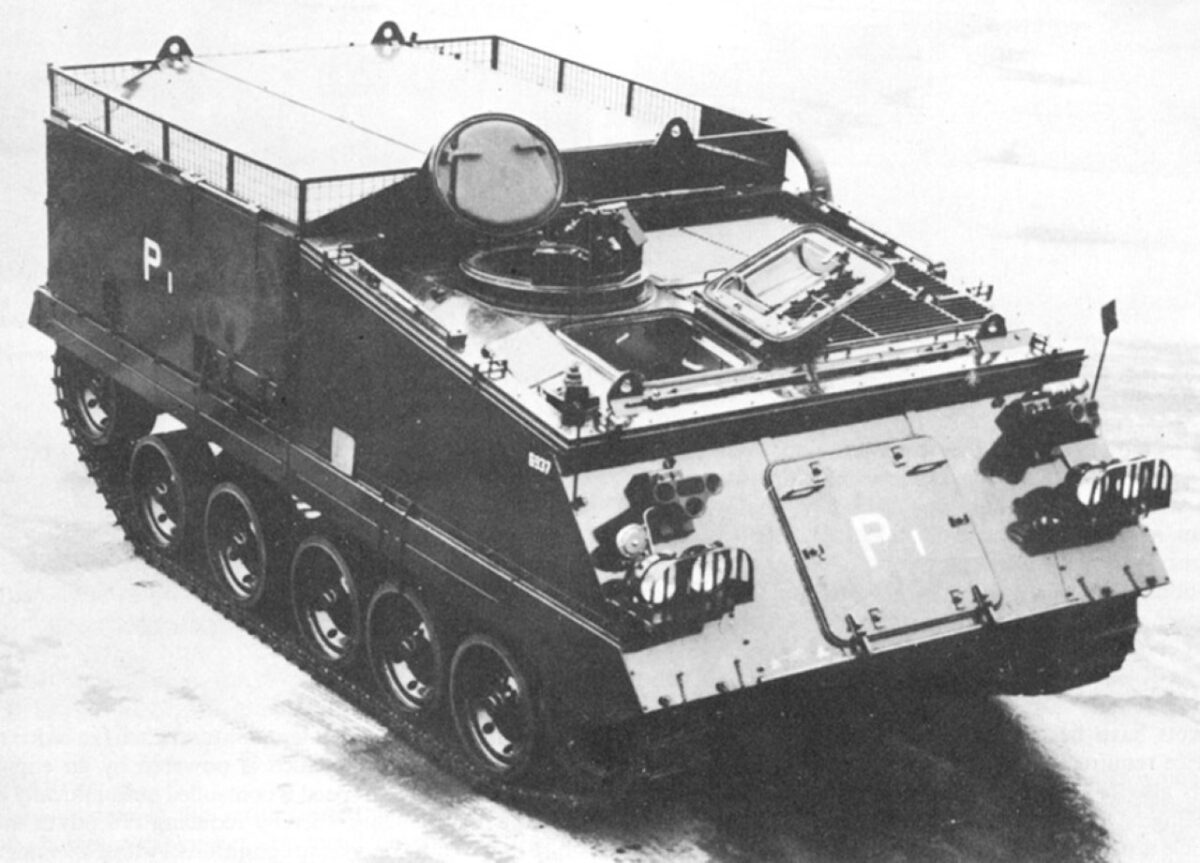
The FV430 series of vehicles has progressed through several marks and many variants, although it was never given a formal name. The original suggestion of the Trojan was dropped after objections from the Trojan car company.
Further work continued and in 1962, GKN Sankey was issued a production contract the same year.
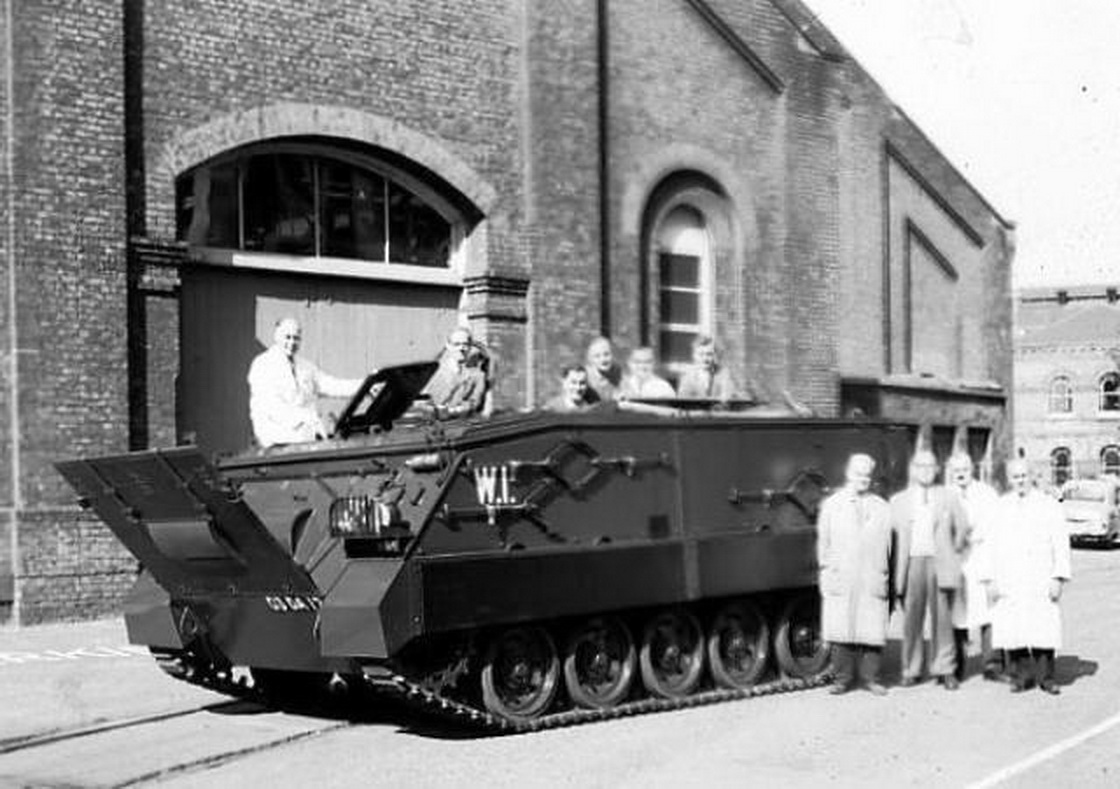
Following troop trials, the first production FV432 vehicles entered service in 1963 and by the end of the production run in 1971 over 3,000 vehicles had entered service with the British Army.
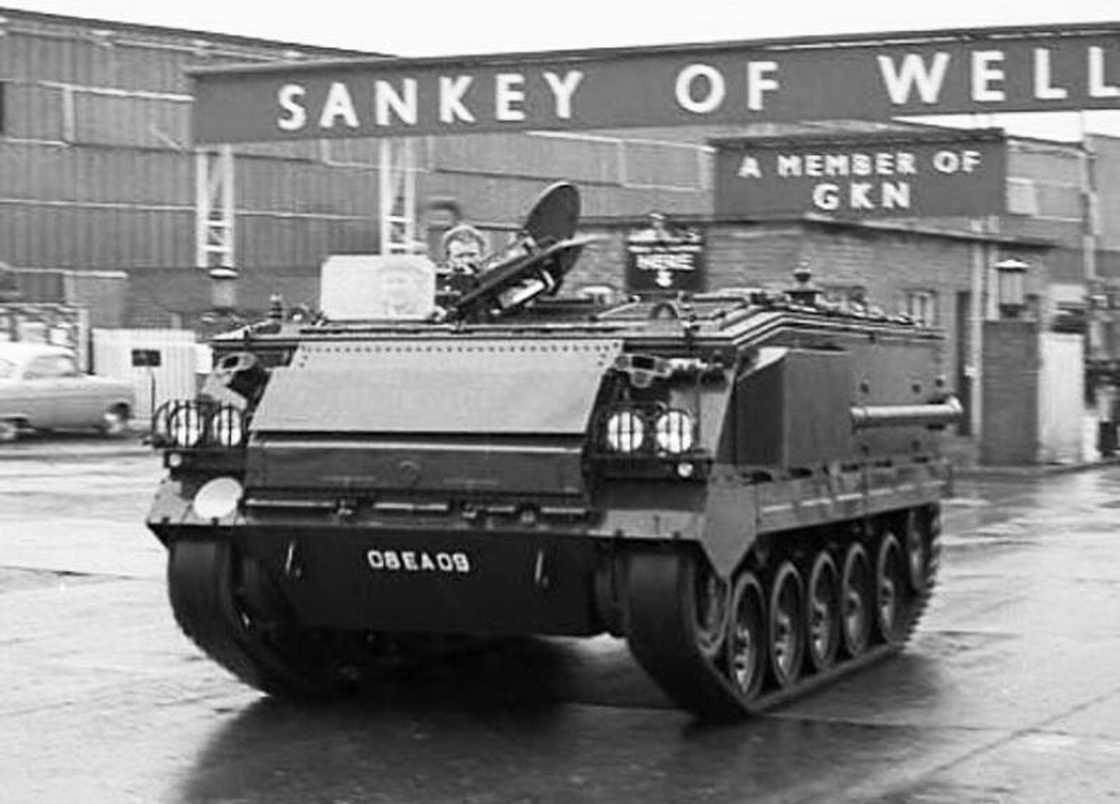
The 432 would also be used for many tasks and have role-specific equipment, carriage for WOMBAT, ground surveillance, command, mortar, ambulance, recovery, Carl Gustav, Barmine layer, Milan, sonic detection, a 30 mm RARDEN Scimitar turret and even provide OPFOR vehicles.
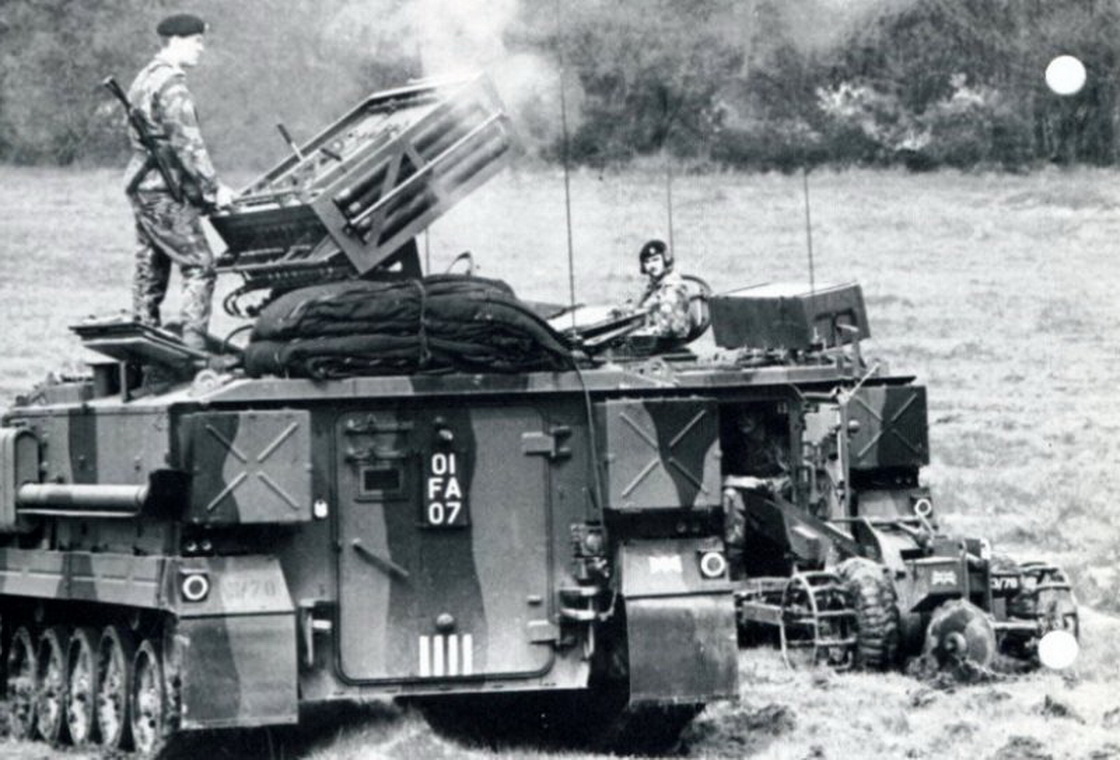
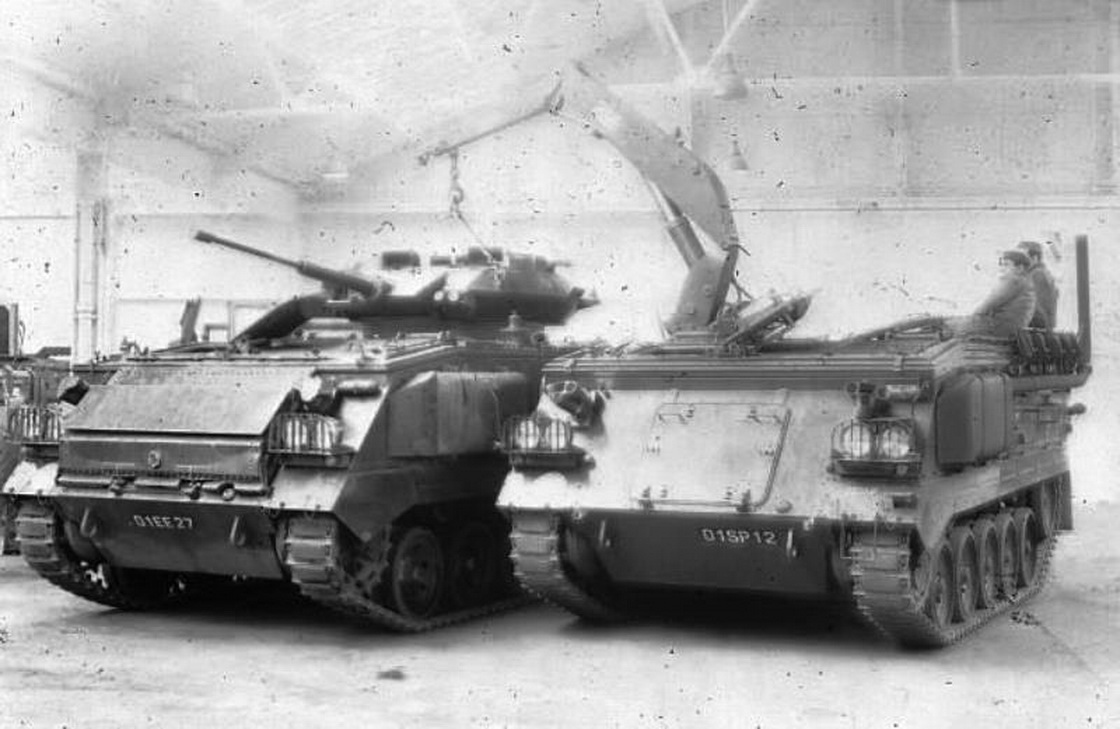
FV432 Armoured Personnel Carrier, a basic APC with 2 crew and 10 dismounts.
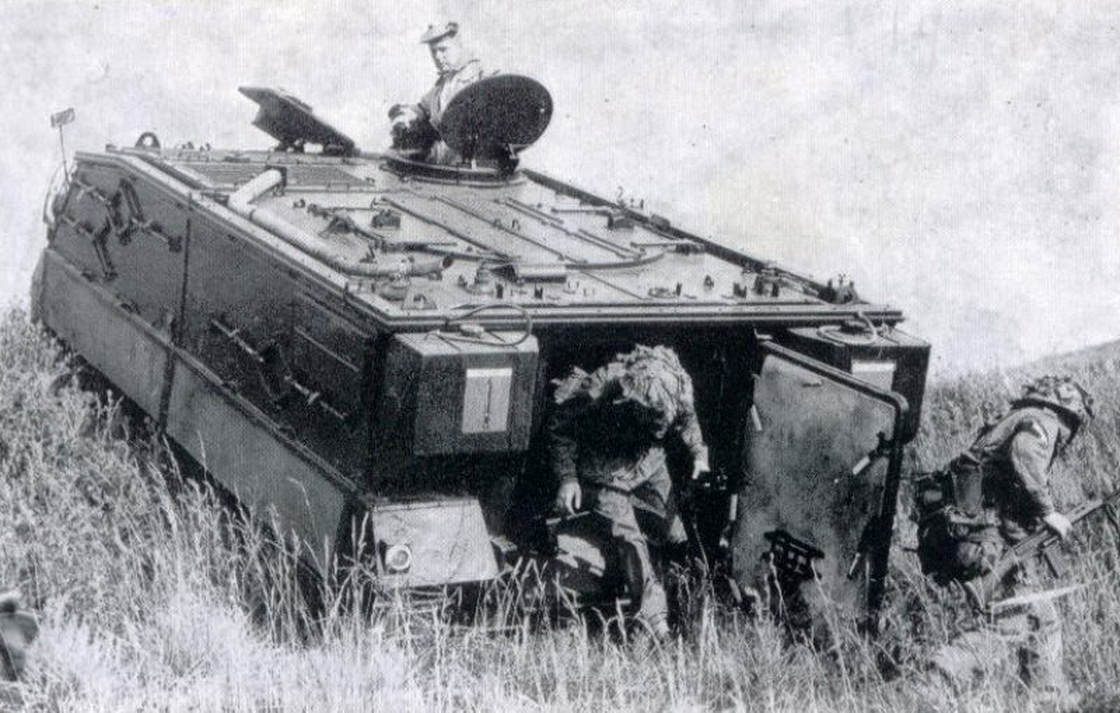
FV433 Field Artillery, Self-Propelled, more commonly known as the Abbot 105 mm self-propelled gun (see the section below) and FV434 Carrier, Maintenance, Full Tracked. REME repair carrier with hydraulic jib.
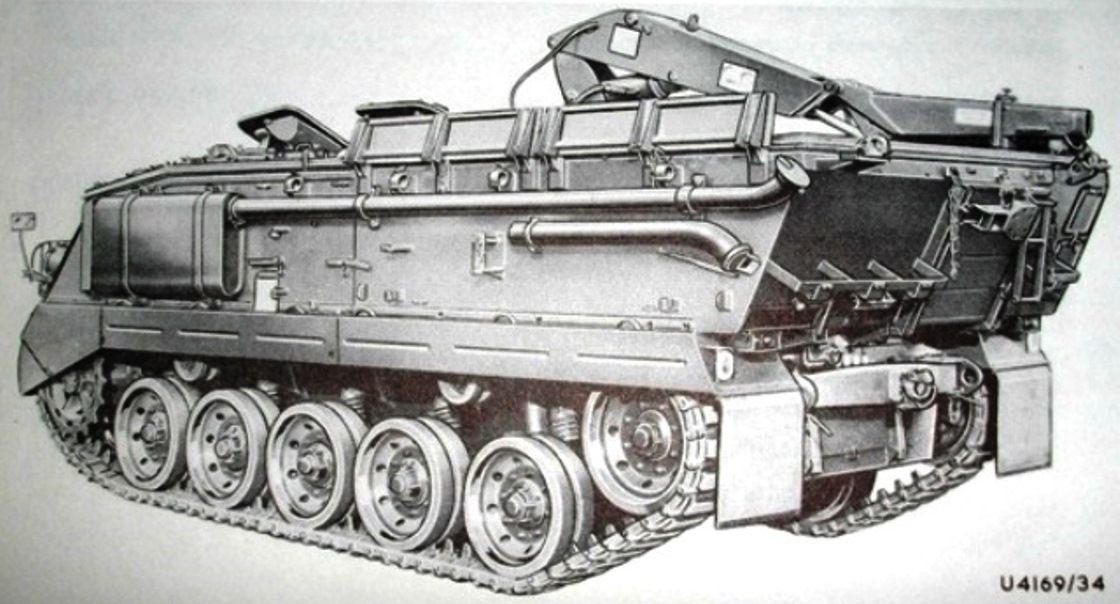
FV436 Command and Control was originally intended for the Green Archer radar, it did not enter service.
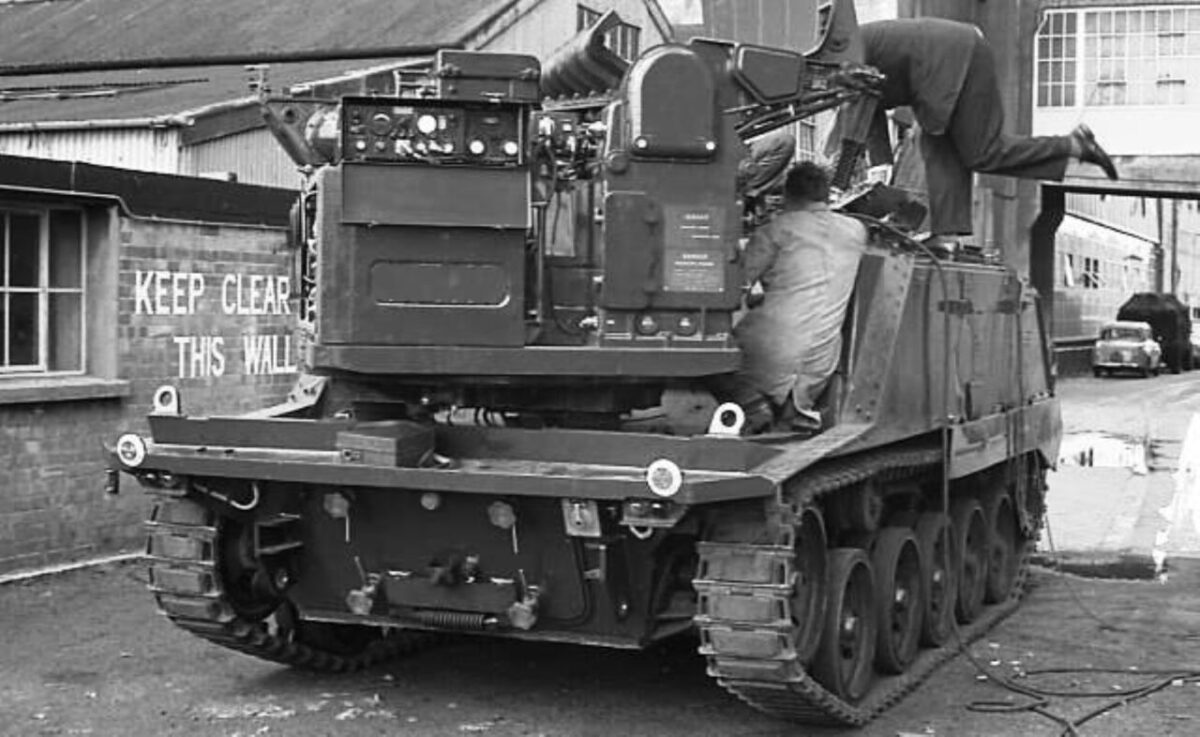
A number of them were converted to the command and control role, taking the unused 436 designation.
The FV435 variant was a carrier for the Wavell communications system. Recognisable by the numerous masts and antennae, and fitted with a wide variety of signals equipment over the years they were in service, the FV439.
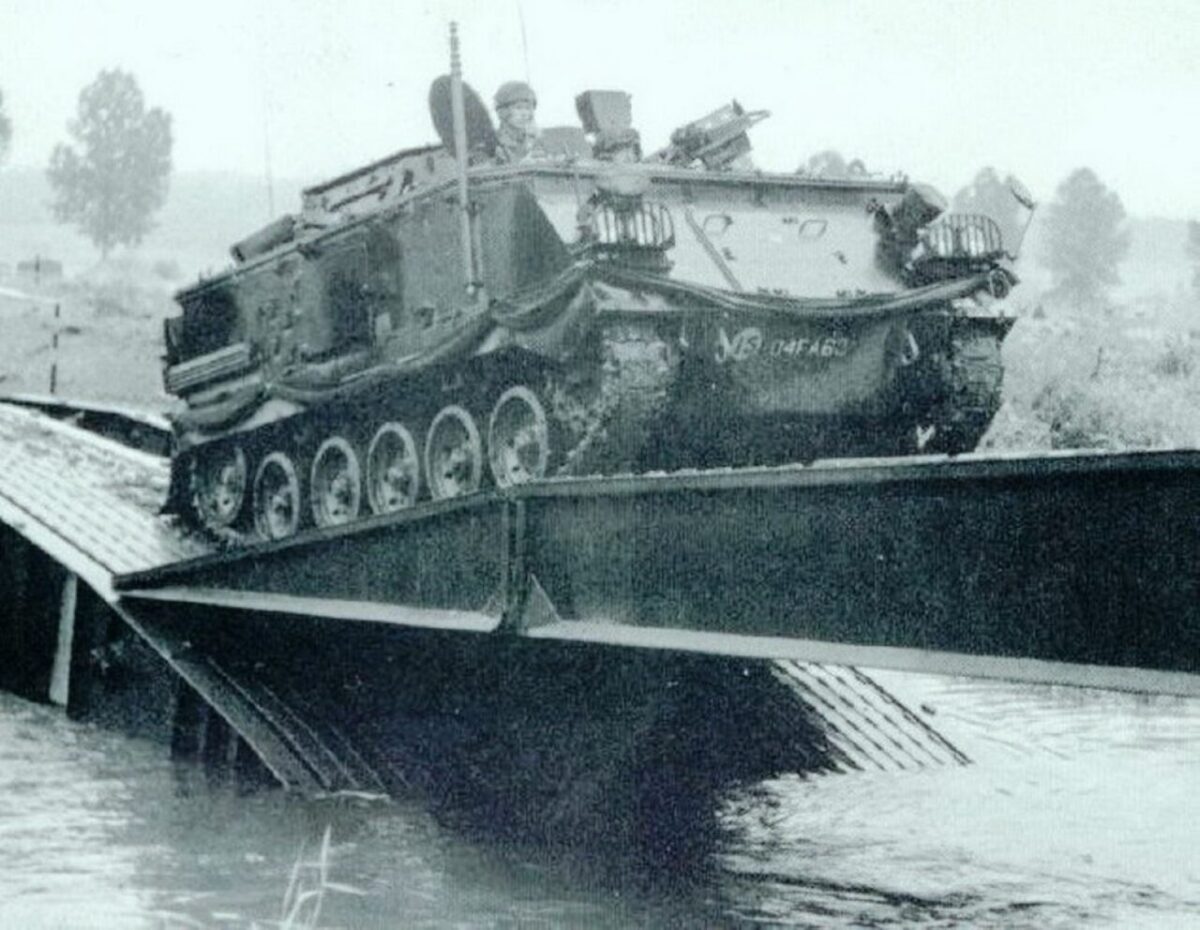
The FV437 Pathfinder was a recovery vehicle equipped with a snorkel, but never entered service.
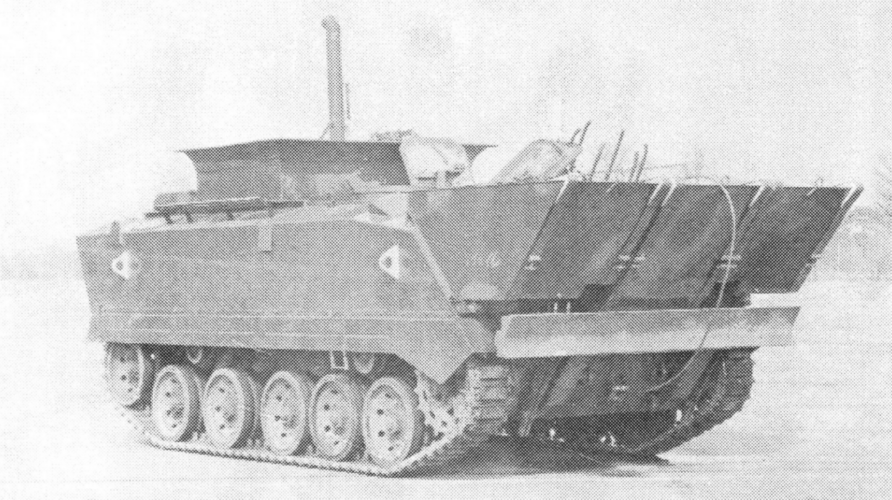
The FV438 was similar to the CVR(T) Striker, armed with Swingfire missiles.
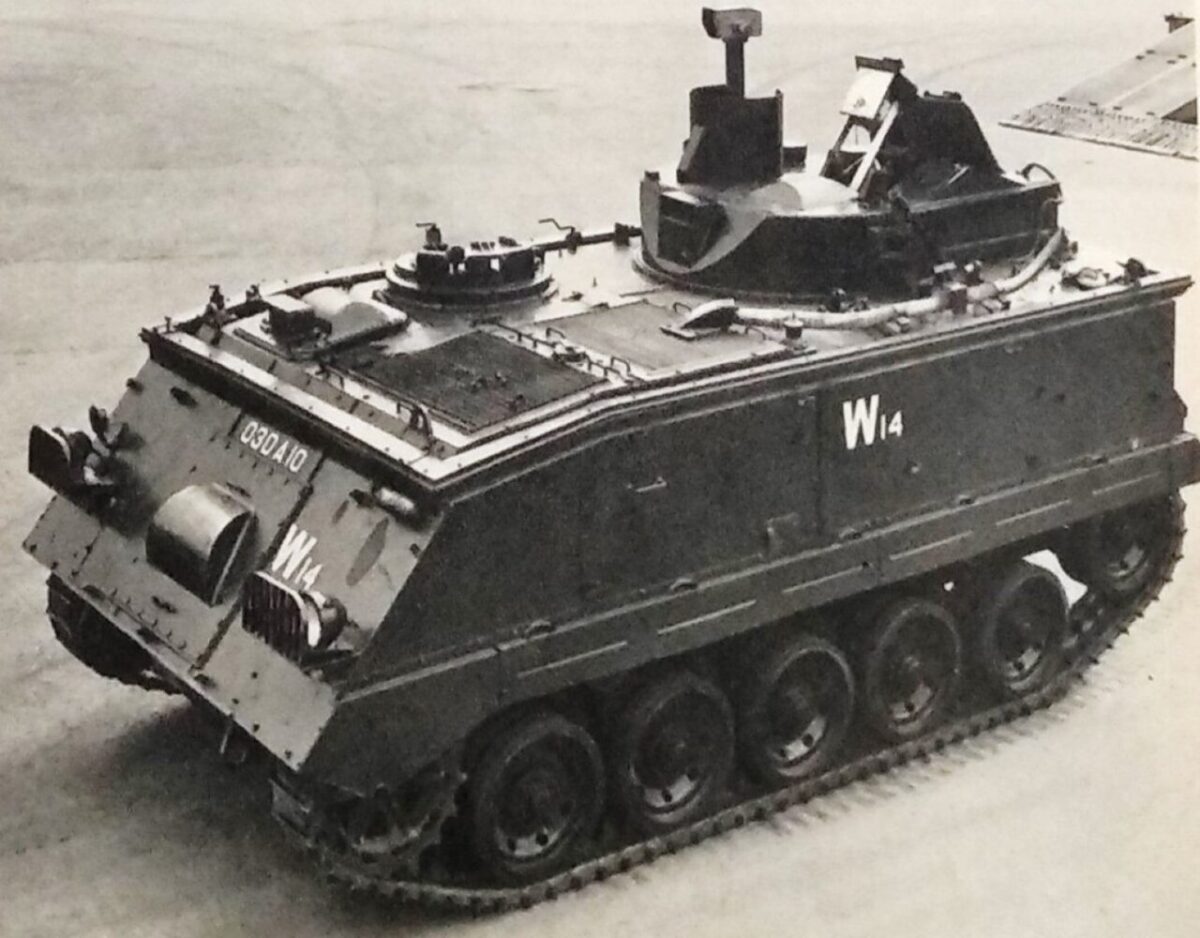
Abbot 105 mm Self-Propelled Gun
The FV433 Abbot 105 mm Field Artillery Self-Propelled was developed by the Fighting Vehicles Research and Development Establishment between 1958 and 1960, designed to replace the 25 Pounder Sexton.
12 prototypes were built in 1961, six powered by the Rolls-Royce B 81 petrol engines and the other six by the new Rolls-Royce K60 multi-fuel engine.
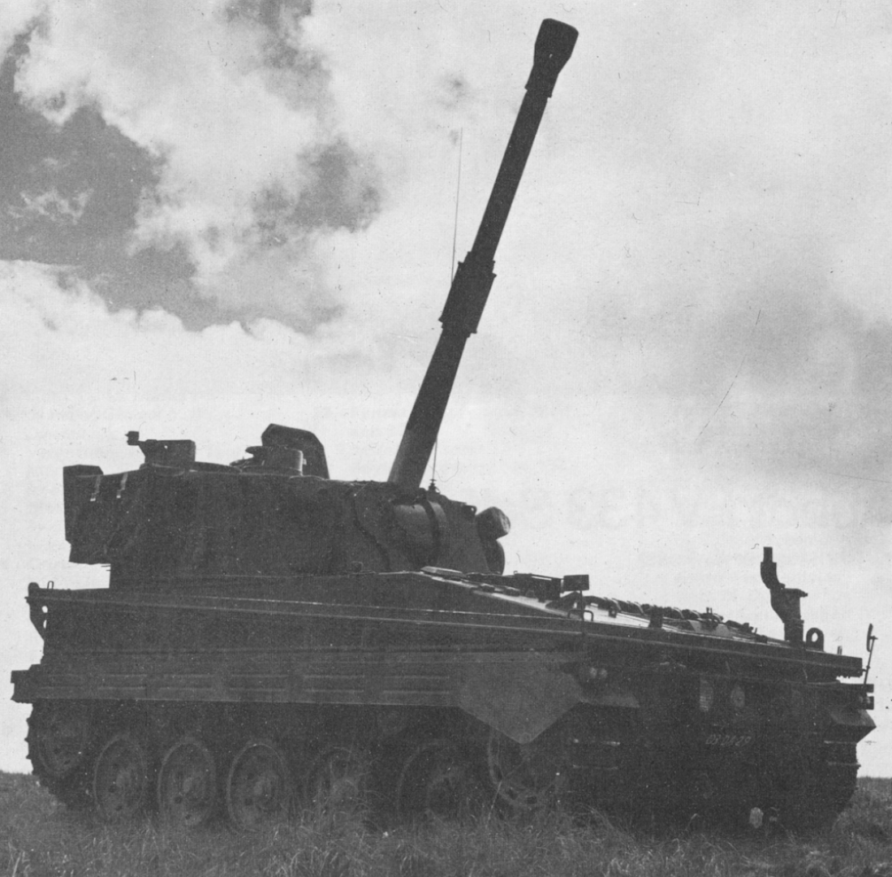
Using the FV432 base vehicle for maximum commonality, Abbot was manufactured at the Elswick factory in Newcastle upon Tyne between 1964 and 1967, first equipping 3RHA in 1965.
They were a considerable improvement over in service designs.
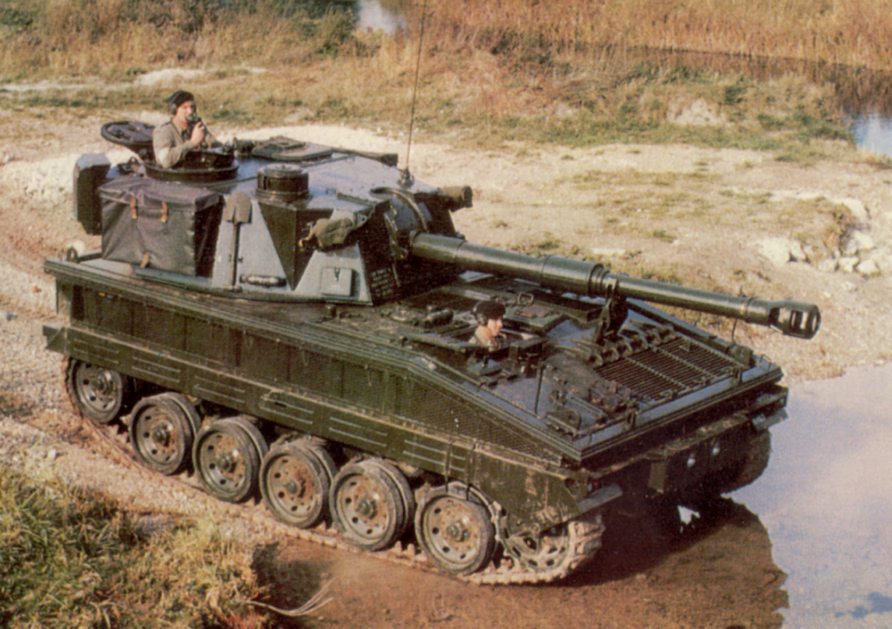
An Abbot regiment consisted of four batteries of six guns, with each battery having two sections of three Abbots, three Stalwart support vehicles, an FV 432 command vehicle, and a Ferret for liaison.
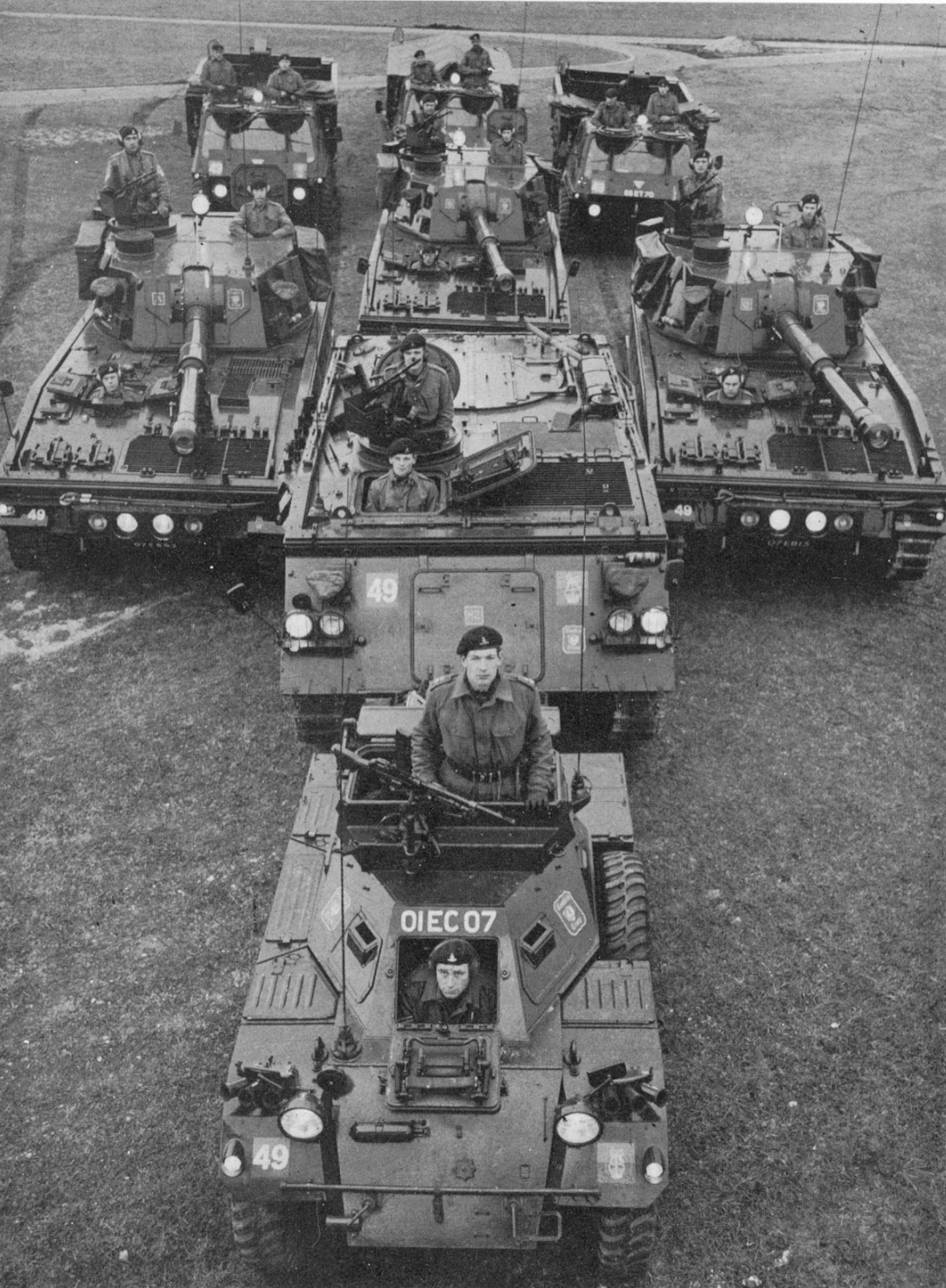
Combat Vehicle Reconnaissance (CVR) – Tracked
Projects and programmes before CVR(T) were moderately complex and convoluted.
In the early sixties, the British Army and the Defence Policy Research Committee started work on a concept of reconnaissance operations to replace Ferret and Saladin. A number of linked and parallel projects eventually produced the Combat Vehicle Reconnaissance family of wheeled and tracked vehicles.
General Staff Operational Requirement (GSOR) 1006 and General Staff Operational Requirement (GSOR) 1010 were both issued in 1961., under the Air Portable and Armoured Fighting and Reconnaissance Vehicle (AAFRV) designation.
A number of different concepts and designs were considered, both tracked and wheeled.
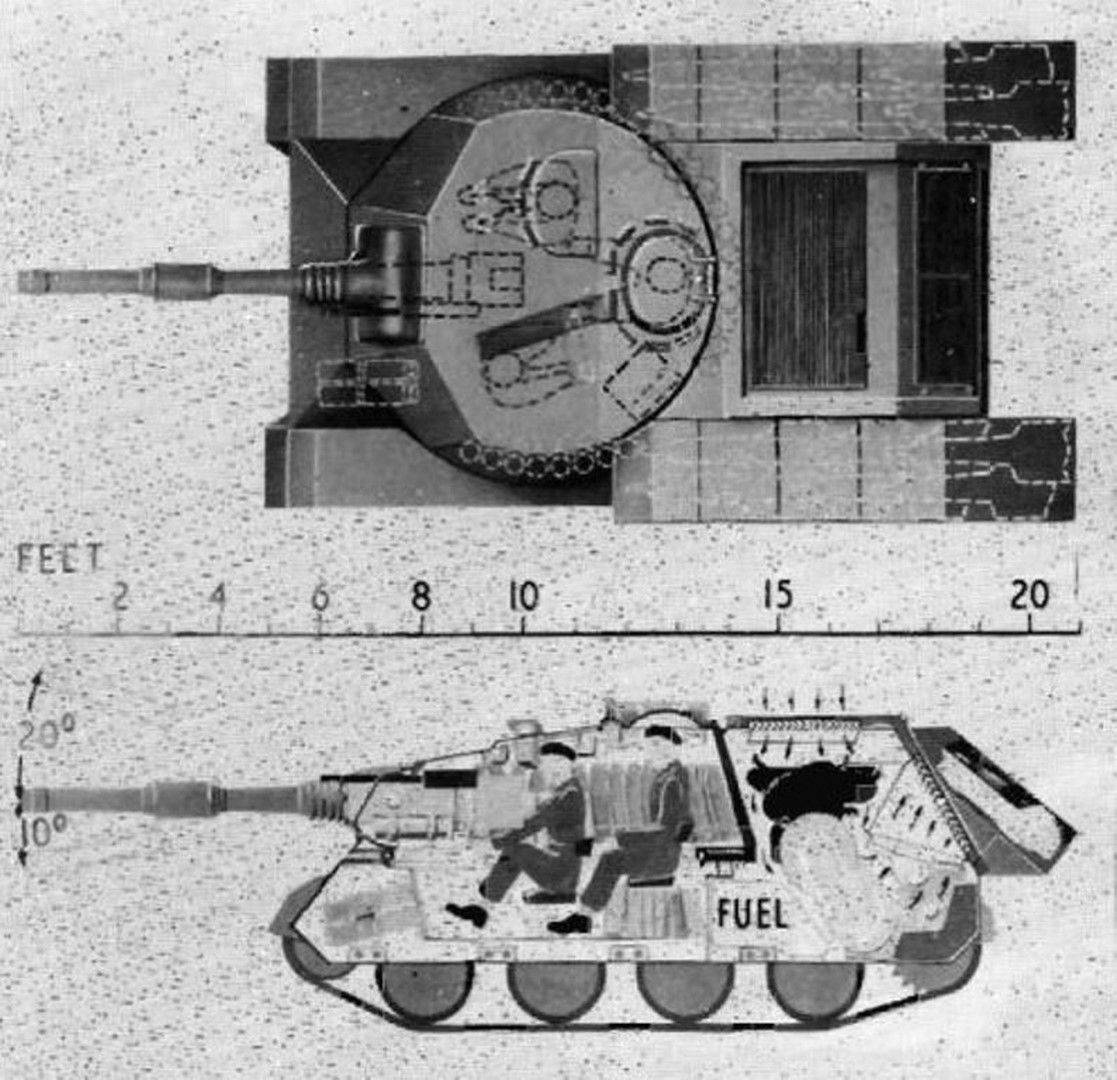
GSOR 1006 were intended to be heavily armed and provide support to the lighter-armed GSR 1010 reconnaissance vehicles.
Early concepts eschewed the combined gun/missile launcher being developed for the US Armoured Reconnaissance/Airborne Assault Vehicle (M551 Sheridan) and proposed, instead, a conventional 3-man tracked design that weighed just under 14 tonnes. This would mount a 76 mm or 105 mm gun with box launchers for the Swingfire Anti-Tank Guided Weapon (ATGW)).
Although not suggested for the GSR, a 20-tonne test vehicle called the TV1000 (powered by a Rover Meteorite V8 petrol engine rated at 535 bhp) introduced several concepts that were to appear in the final design. The ‘skid steering system’ of the TV1000 (it was actually much more sophisticated than that) caused many problems: tire wear, poor stability at speed and poor turning performance on soft ground.
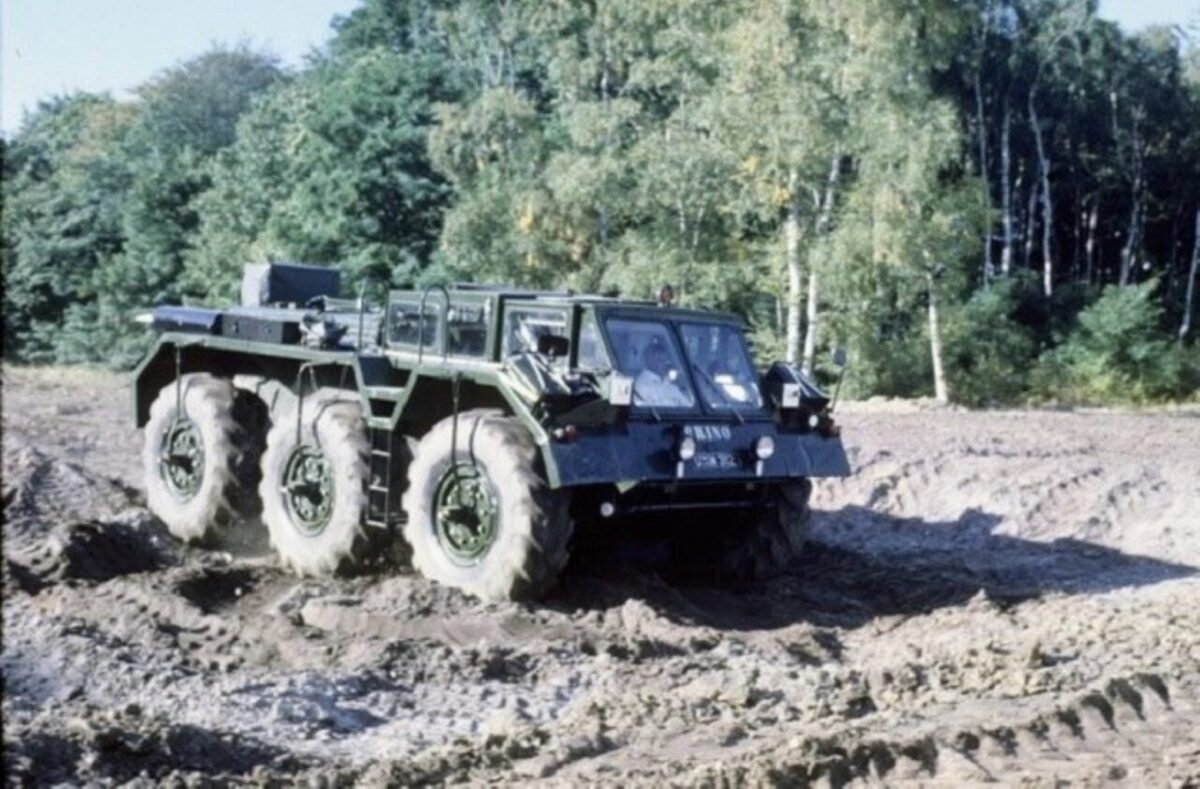
The vehicle never progressed beyond being a test bed.
A review of the two projects concluded it would be wasteful to pursue both, and so they were merged. Air transportability was still a key user requirement, but earlier 4.5-tonne Argosy limits were increased as transport aircraft were increasing in carrying capacity.
In 1963, the Defence Policy Research Committee was succeeded by the Defence Research Committee and Director Royal Armoured Corps, formed General Staff Operational Requirement (GSOR) 3301 in 1964.
GSOR 3301 was renamed to Armoured Vehicle Reconnaissance (AVR), again, wheeled and tracked.
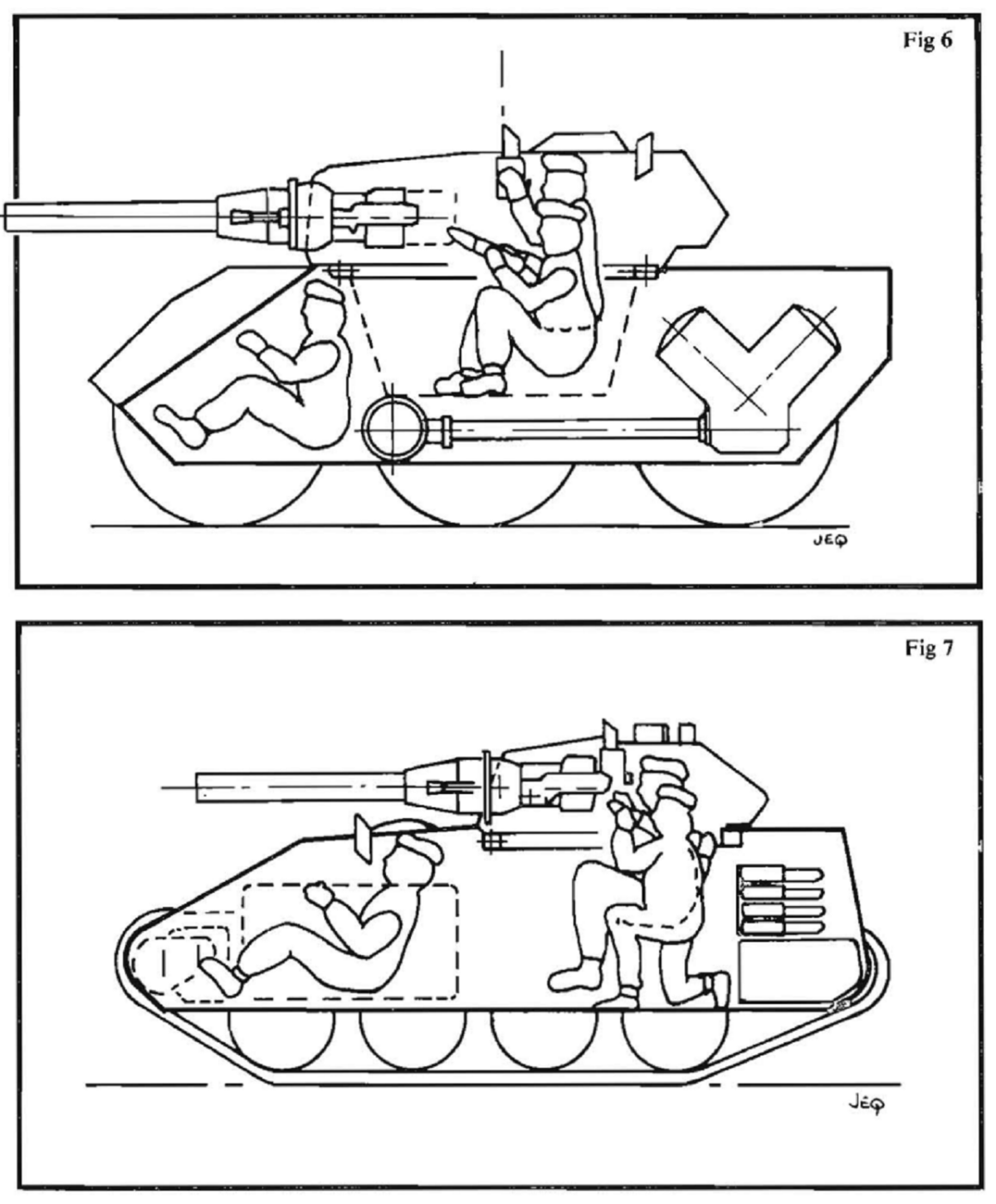
AVR was specified in four variants.
AVR Fire Support (AVR/FS) to replace Saladin, but still armed with its 76 mm main gun.
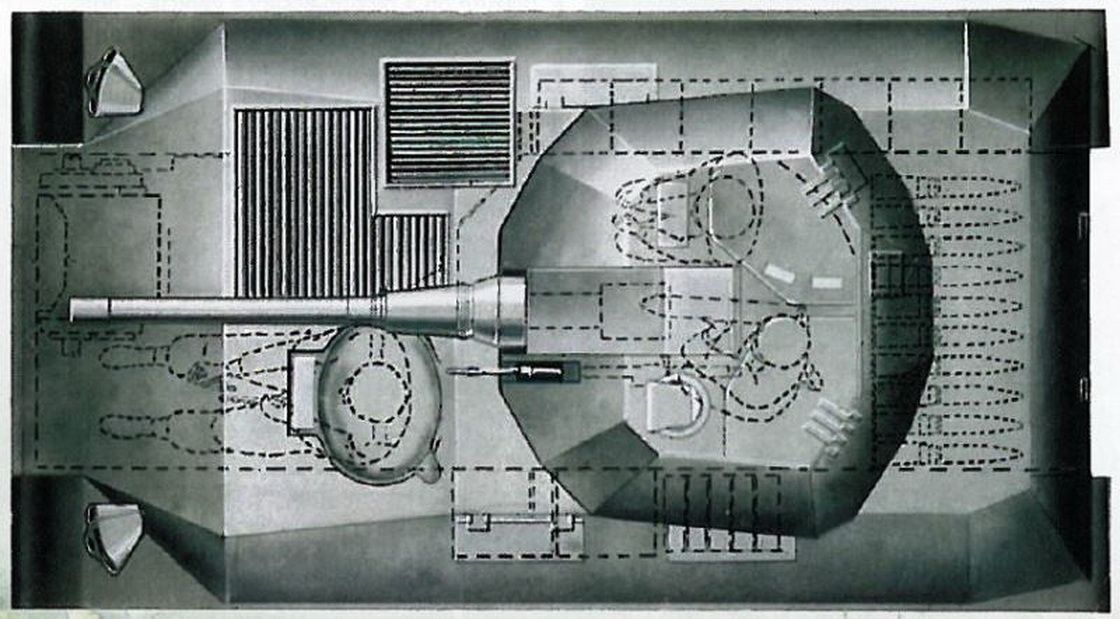
AVR Anti-tank (AVR/AT) is an anti-tank guided weapon launcher, Swingfire.
AVR Anti-APC (AVR A/APC), armed with a medium calibre automatic cannon for destroying enemy APC and recce vehicles.
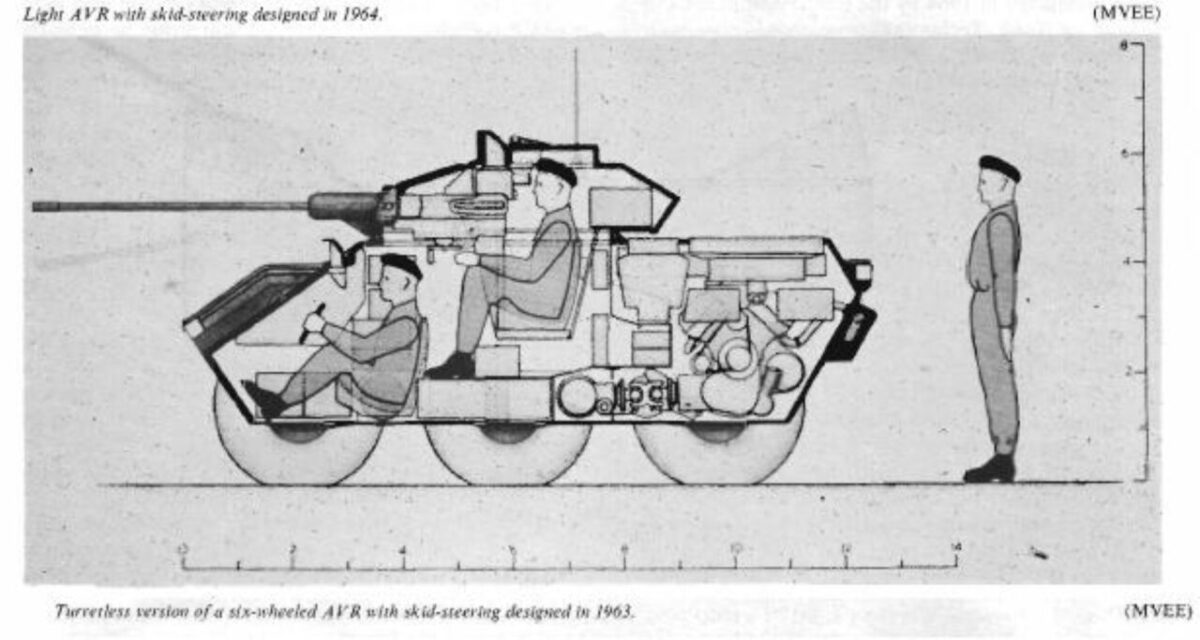
Liaison Vehicle, to replace Ferret.
An APC, recovery, ambulance, and command vehicle would also be required.
GSOR 3301 also absorbed some smaller programmes including the UK/Australian Lightweight High Mobility Tactical Vehicle (LHMTV) and would eventually change to the Combat Vehicle Reconnaissance requirement.
FVRDE was working on a self-propelled carrier for a 105 mm howitzer that was to be constrained by the payload capacity and internal dimensions of the Armstrong Whitworth Argosy transport aircraft.
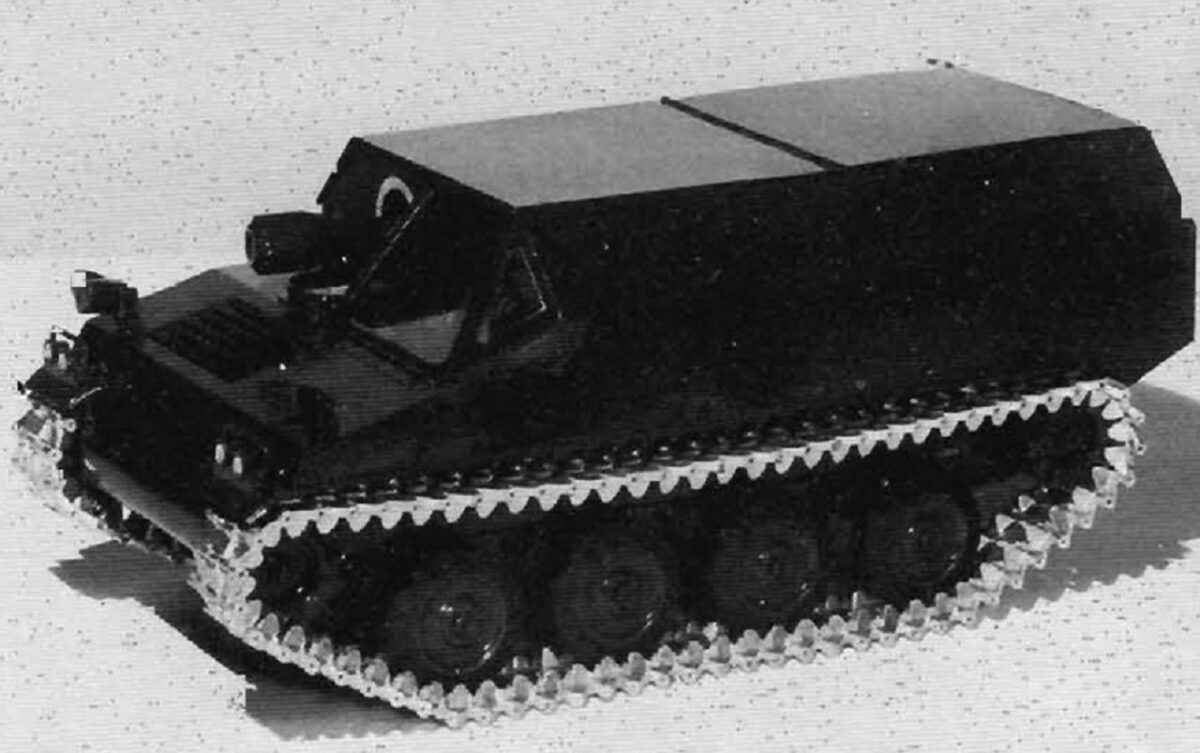
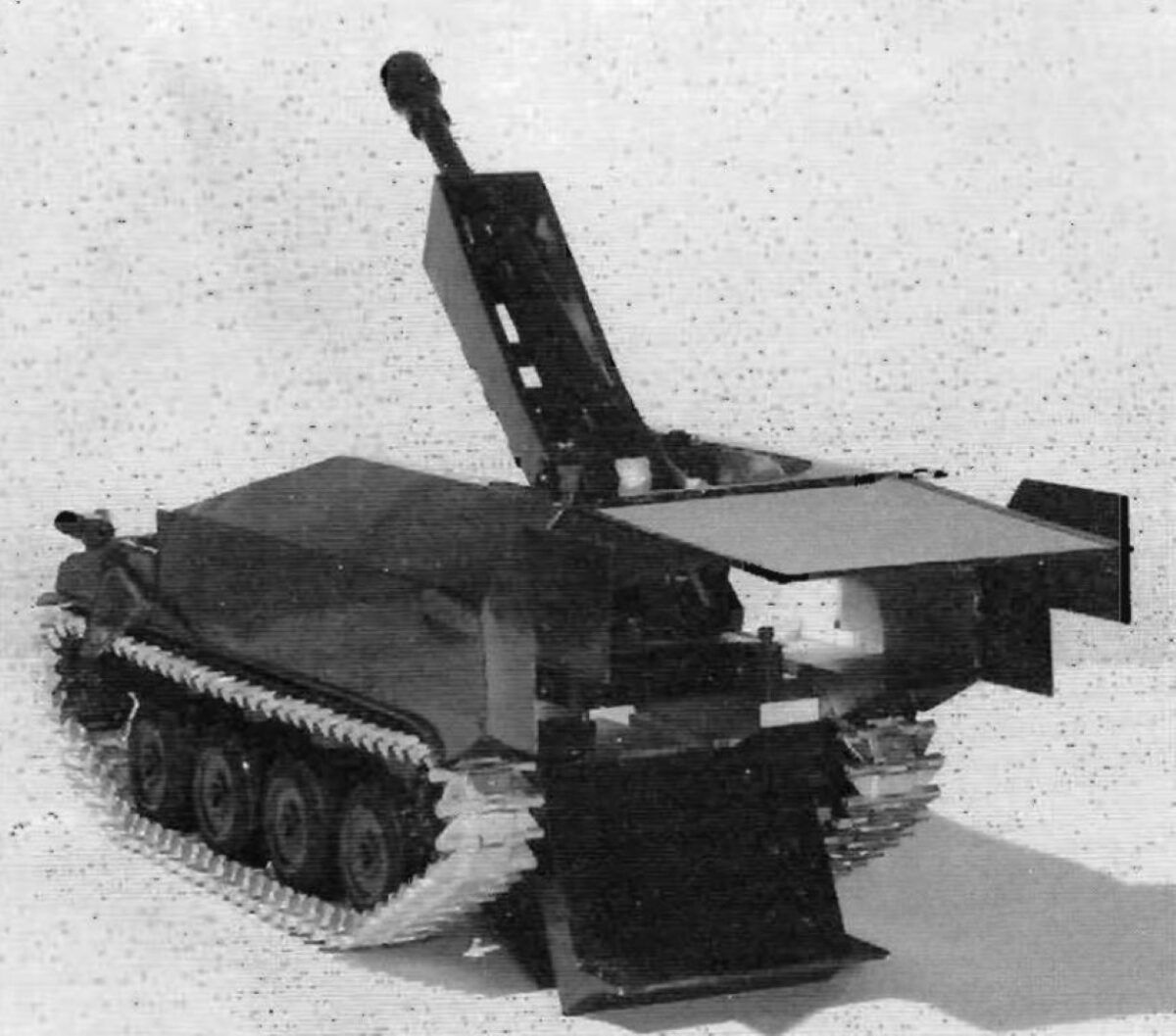
The Argosy’s payload capacity was very low by today’s standards, at just 4.5 tonnes.
Although ultimately rejected by the Royal Artillery, the chassis would form the basis for LHMTV which also included an APC, a 120 mm recoilless rifle carrier, an armoured ambulance and a reconnaissance detachment carrier, concepts from 1964 shown below.
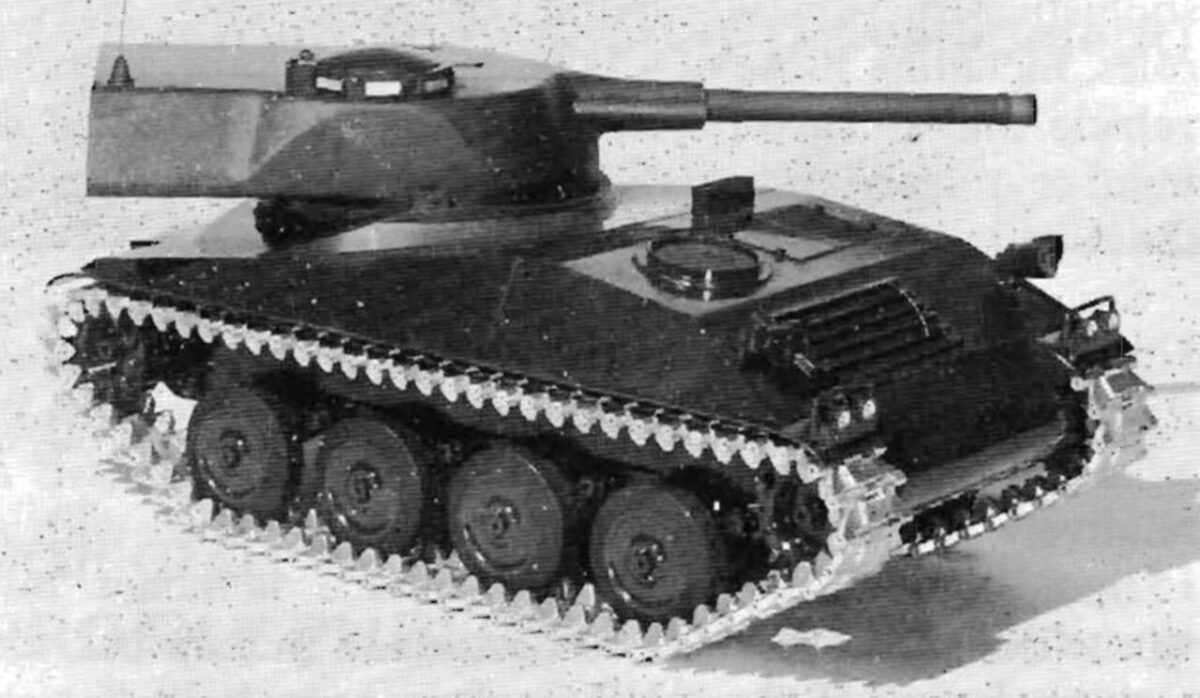


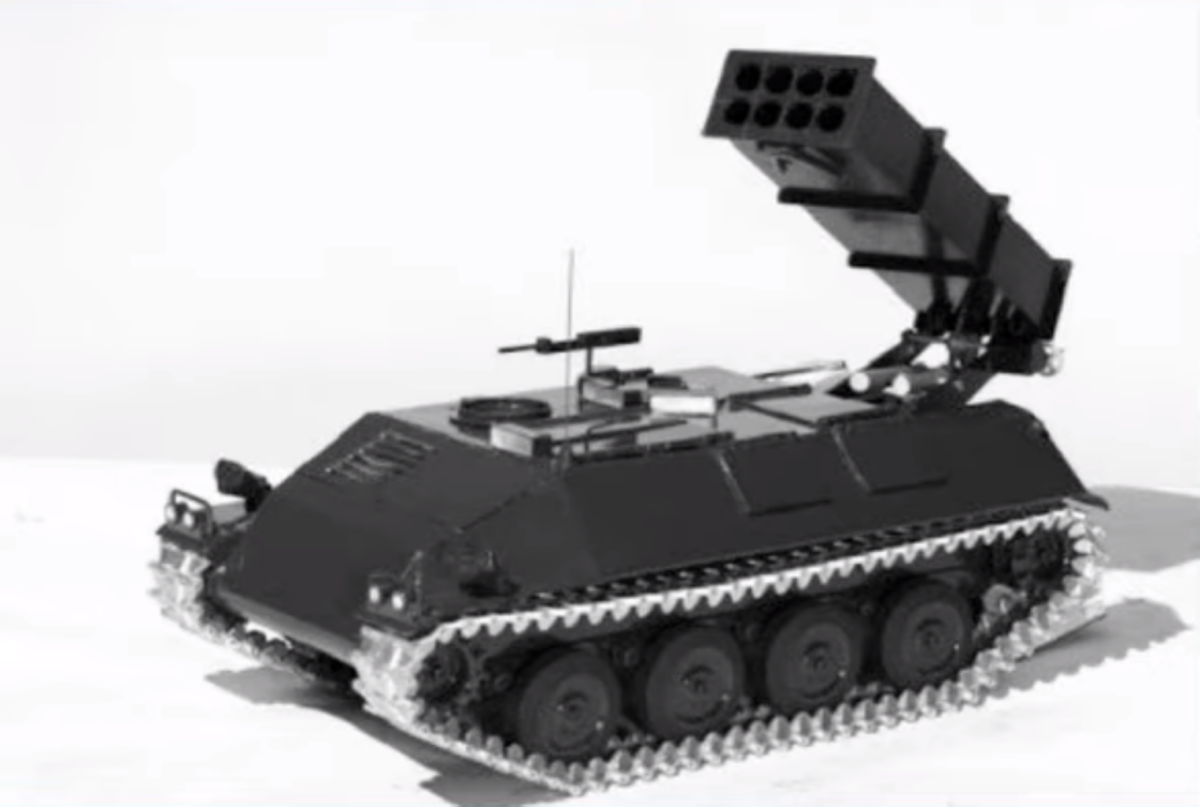
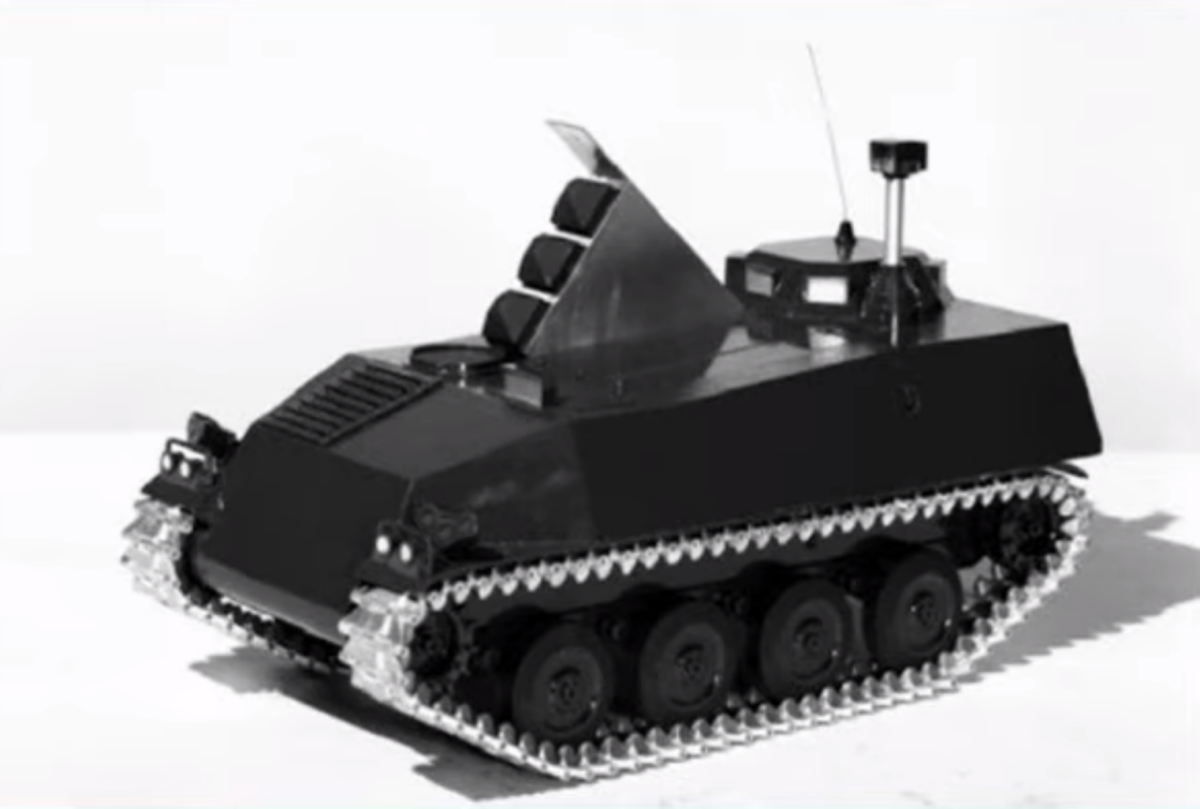
A larger version with an extra road wheel was clearly going in the same direction of travel as CVR(T).
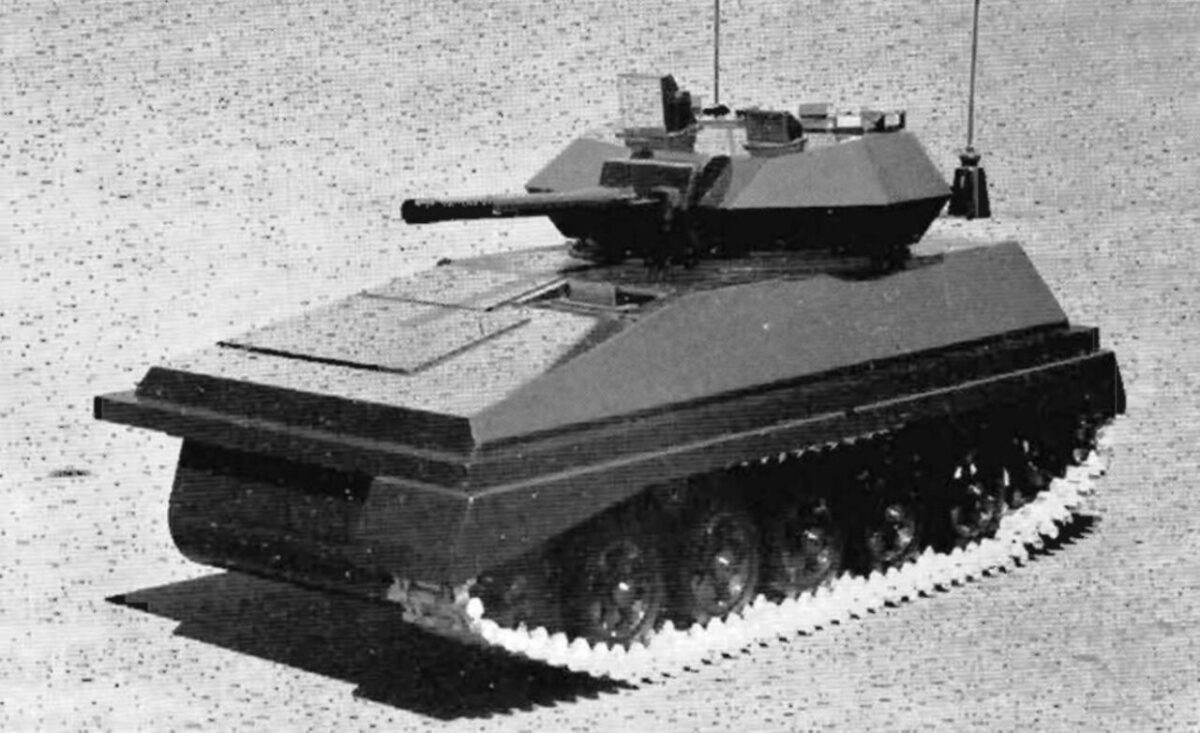
The 7ft (2.13 m) width of Malayan rubber plantation fame came from LHMTV.
The heavier AVR and ultra-lightweight LHMTV would meet somewhere in the middle for CVR(T), with carriage by C-130 being a more realistic limit.
Modern aluminium armour allowed weight to be minimised and the 4.2 Litre Jaguar XK engine had been tested in a Ferret. Both would be featured in the Test Vehicle.
The wheeled requirement had originally been dropped from AVR, but would now re-appear in CVR.
GSOR 3358 was wheeled, and GSOR 3301, was tracked.
The Fighting Vehicles Research and Development Establishment (FVRDE) developed and tested the Test Vehicle (TV) 15000 as a precursor to CVR(T)
TV 15000 featured a range of innovations. Aluminium armour, for example, had never been used on a British vehicle, before. Its hydropneumatic suspension and lightweight tracks were also at the cutting edge.
In parallel with work by FVRDE, the Government entered into a fruitless agreement with the USA, Canada, and Australia to explore concepts for a light reconnaissance vehicle, with the detailed design work being carried out by FMC in the USA.
Meanwhile, work on TV15000 had continued and by the end of 1966, FVRDE had produced two test rigs, one static and one mobile, with the mobile test rig rolled out of the workshops on Christmas Eve 1965, shown in the image below.
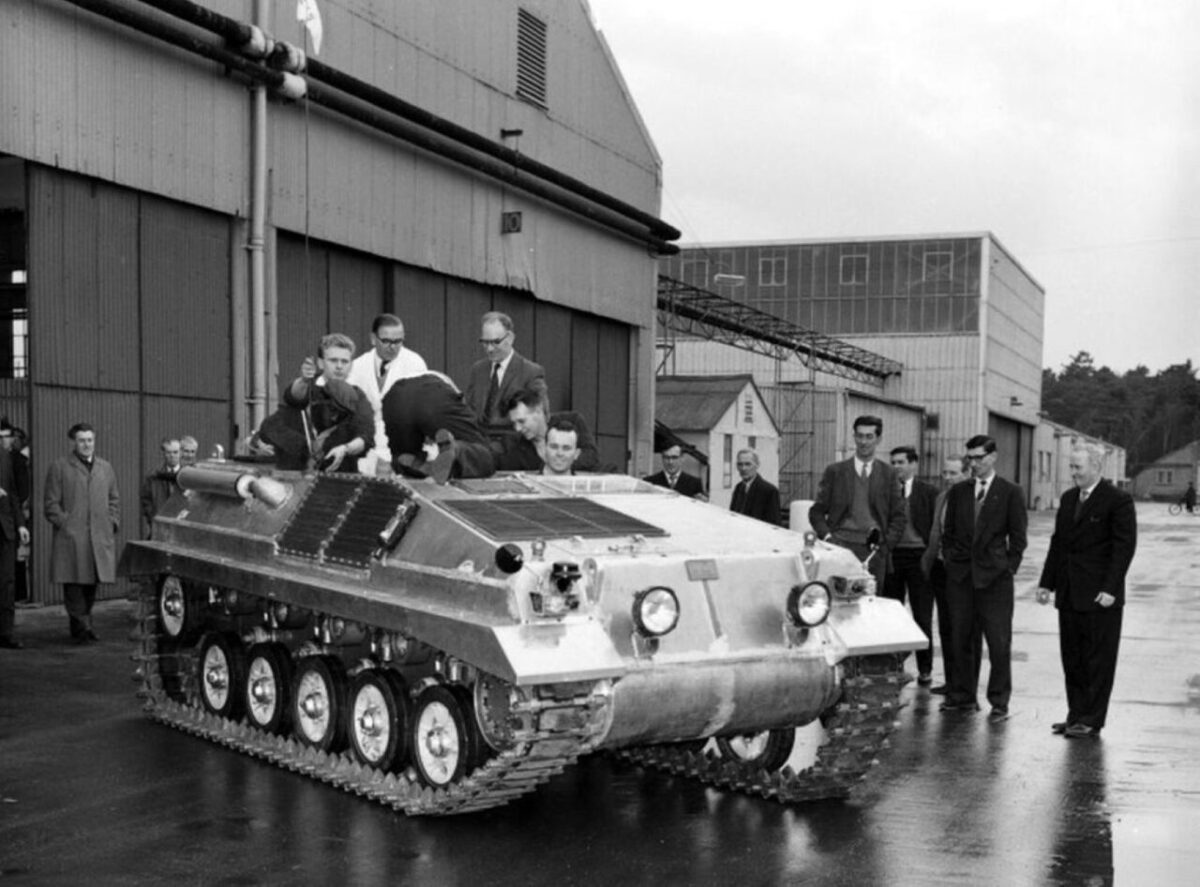
The Test Rigs were intended specifically to prove the automotive components: engine, transmission, track, and suspension. The TN-15 transmission was a scaled-down variant of the Self Changing Gears Ltd Merritt Wilson TN12 as used in the Chieftain. This system was so far ahead of its time that the designer reputedly had a nervous breakdown trying to figure out how to design the final drives!
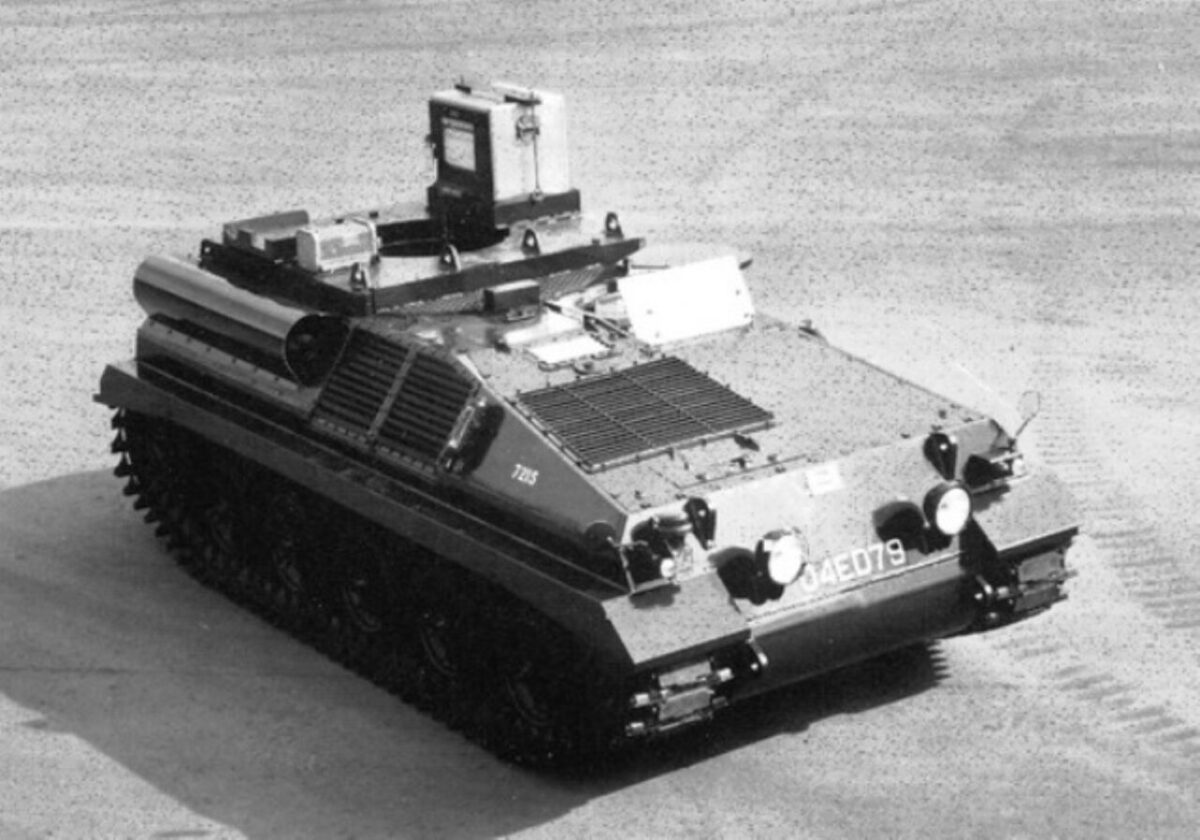
The original hydropneumatic suspension of the TV 15000 was eventually replaced with a more conventional torsion bar design, and the Rolls-Royce Vanden Plas B.60 engine was swapped for a new version of the 4.2 Litre Jaguar XK.
The petrol engine was derated to 195 bhp to allow it to use low octane fuel, and this produced a power-to-weight ratio of approximately 26 bhp/tonne, delivering a range of 600 km.
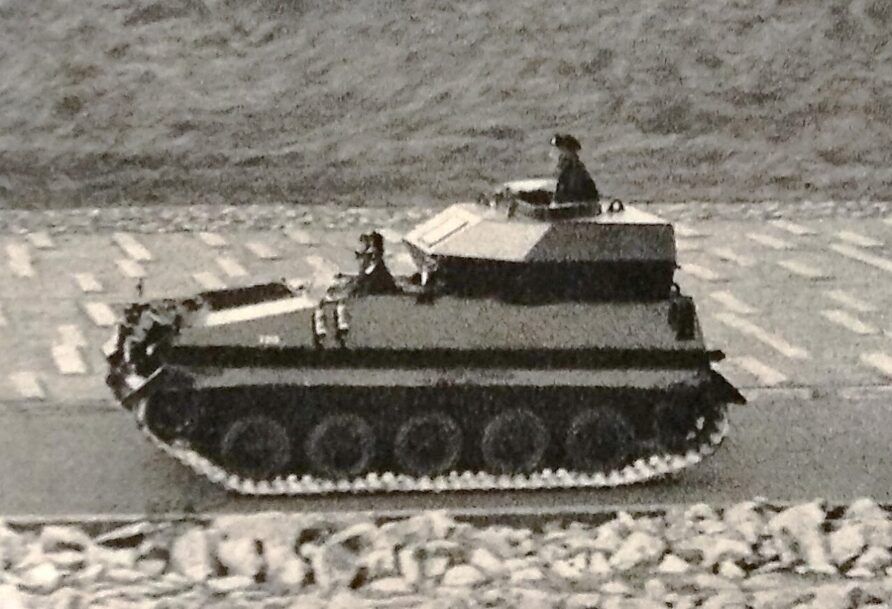
A representative turret was soon added.
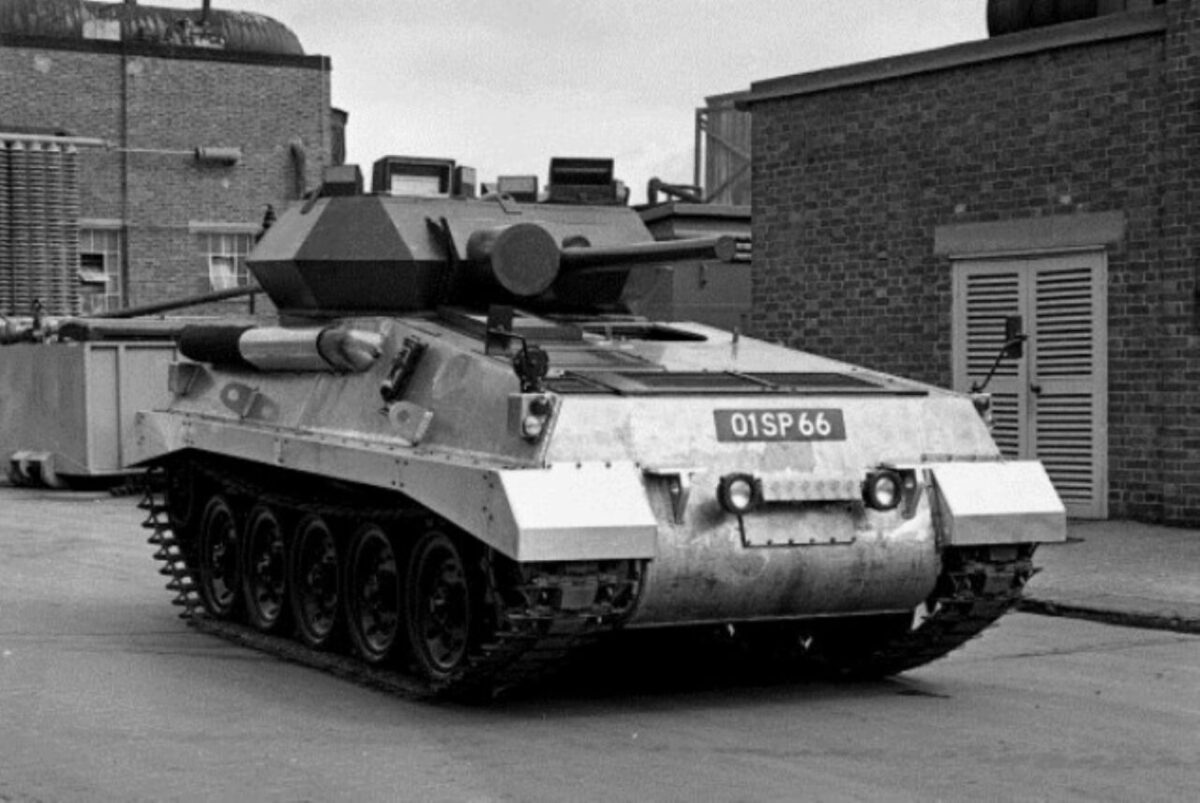
A year later (they did not mess around in those days) Alvis was awarded a contract to produce 17 CVR(T) prototypes from the Mobile Test Rig design and test studies, prototypes would include Scorpion, a version armed with the 30 mm RARDEN cannon, recovery, command, APC, and Swingfire ATGW carrier.
The first prototype Scorpion was rolled out of the Alvis factory on January 23rd 1969.
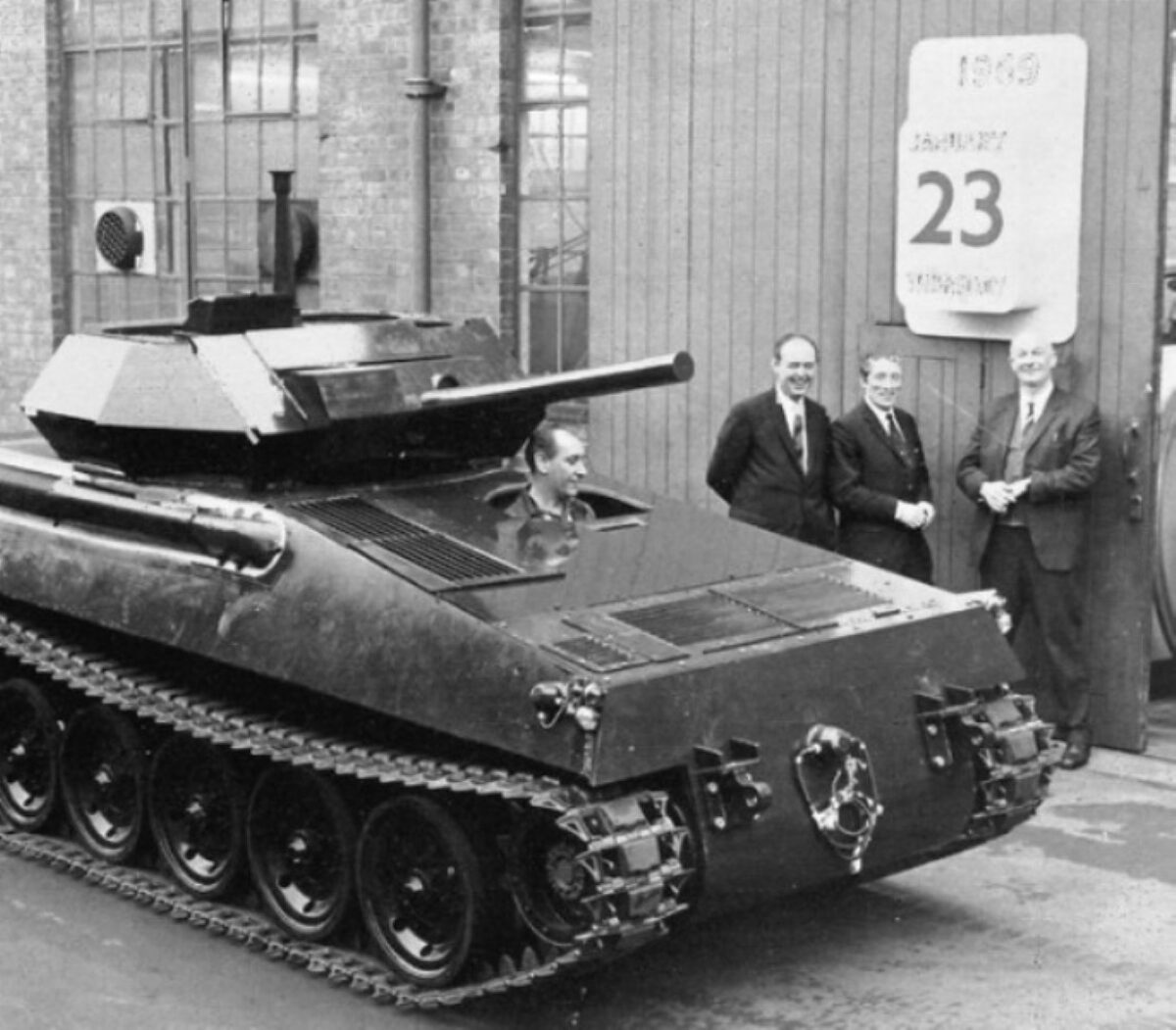
Trials would commence soon after
30 prototypes were eventually built.
Infantry Fighting Vehicle Concepts
With the Armoured Personnel Carrier (APC) firmly established and in service across NATO, further doctrinal development came to the conclusion that APCs would likely meet enemy APCs on the battlefield, and thoughts moved to how they would survive and defeat them.
Emerging thinking and conceptual development were given fresh impetus after the appearance of the Soviet BMP-1 during Victory Parades in 1967, entering service with the 120th Guards Rogachev Motor Rifle Division a year or so later.
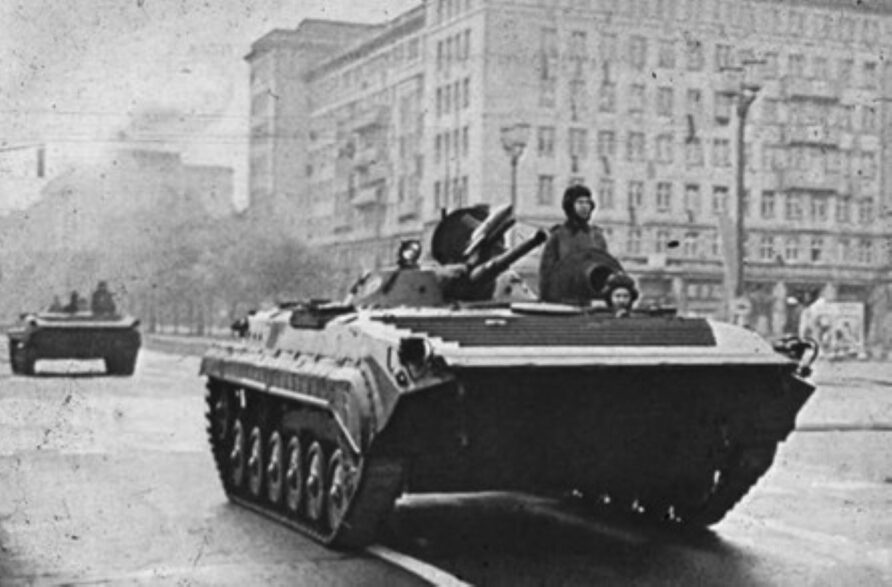
Formal work on the FV432 replacement started the same year.
Summary
After a period of frenetic vehicle development in the fifties, the sixties saw a more consolidated approach with the introduction of the world’s first Main Battle Tank, the flawed Chieftain, and the FV432 family of evergreen vehicles.
The development also concluded on what would become CVR(T)
Land Rover, Stalwart and Antar all supported a set of general transport vehicle improvements over earlier designs.
The 1965 Christmas Number 1 was Day Tripper by the Beatles.
Discover more from Think Defence
Subscribe to get the latest posts sent to your email.


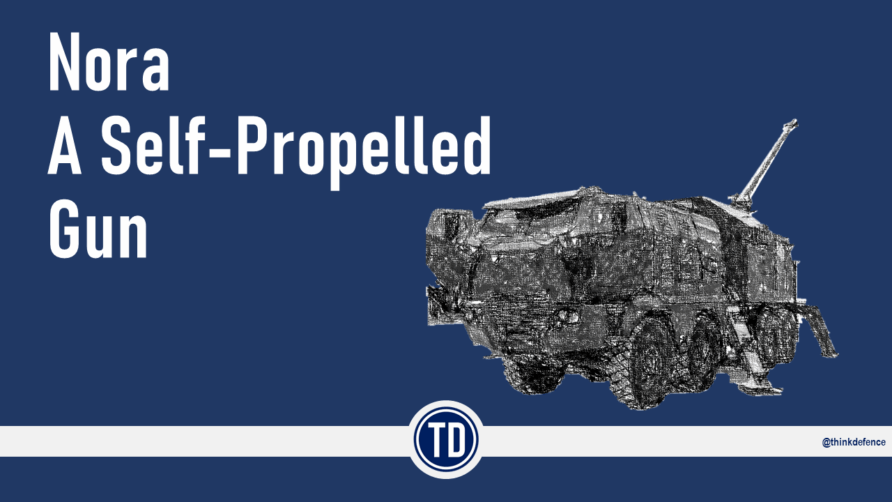
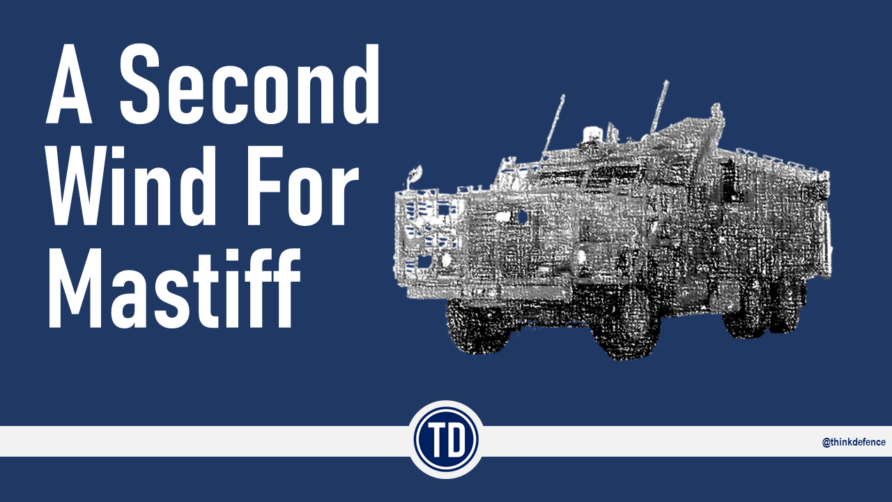
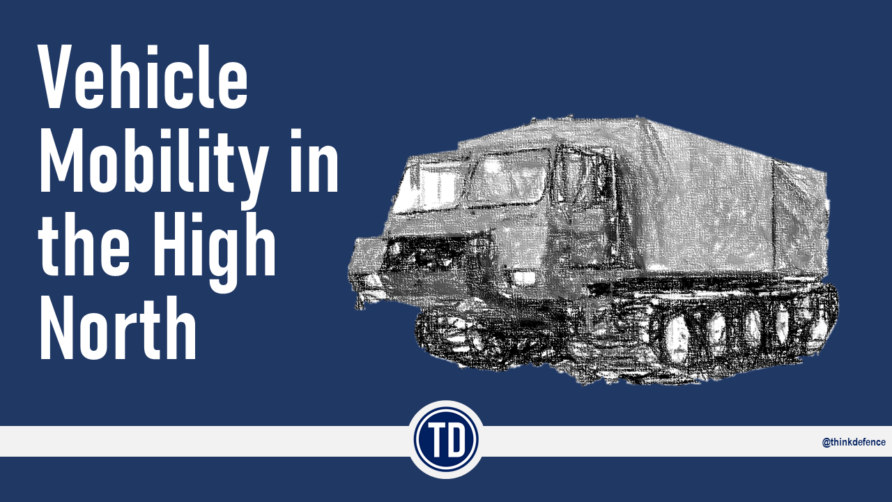
Another excellent article.
I see a trend already and it involves the terms "Air Carriage" and "Air Mobility"… I wonder what the term will be when you get to the 00s and beyond…
Great article. Really enjoyed it.
France never withdrew from NATO.
I'm an ex British soldier, I was posted to Germany, after my basic training in 1987.
Not long after arriving in Germany I was put on my HGV 2 course to drive a Stalwart.
What an amazing piece of kit, my one still had all its gear fitted, ready to swim.
My stalwart could easily keep up across country beside my troops 432's, and CVRT's.
They then got rid of it and replaced the Stalwart with the new Bedford TM. Absolutely rubbish, it would spin on the main roads in wet weather, and always get bogged in whilst on exercise.
For the Argosy , its max payload was in fact 25,000 lb or 11 tonnes. The 4 tonne mentioned is for a long range payload which is much lower than max, but applies for all types.
The Blackburn Beverly had a much higher payload at 44,000lb , not far from the C130A Hercules of the time at 50,000 lb but considerably less than the Short Belfast at 85,000 lb
Regarding France and Nato, the story correctly describes 'France withdrew her forces from NATO integrated command in 1966'. It doesnt say withdrew from Nato
I did a quick instream edit to correct my obvious error!!